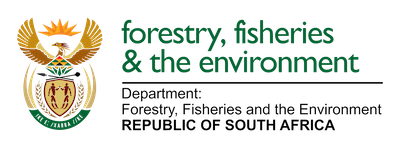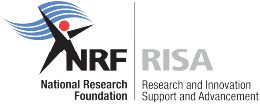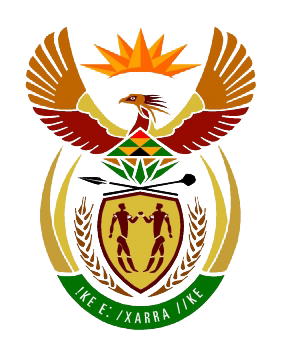
by Ria Olivier | Mar 4, 2024 | APECSSA, Fellowship, Research, SANAP, SANAP Student
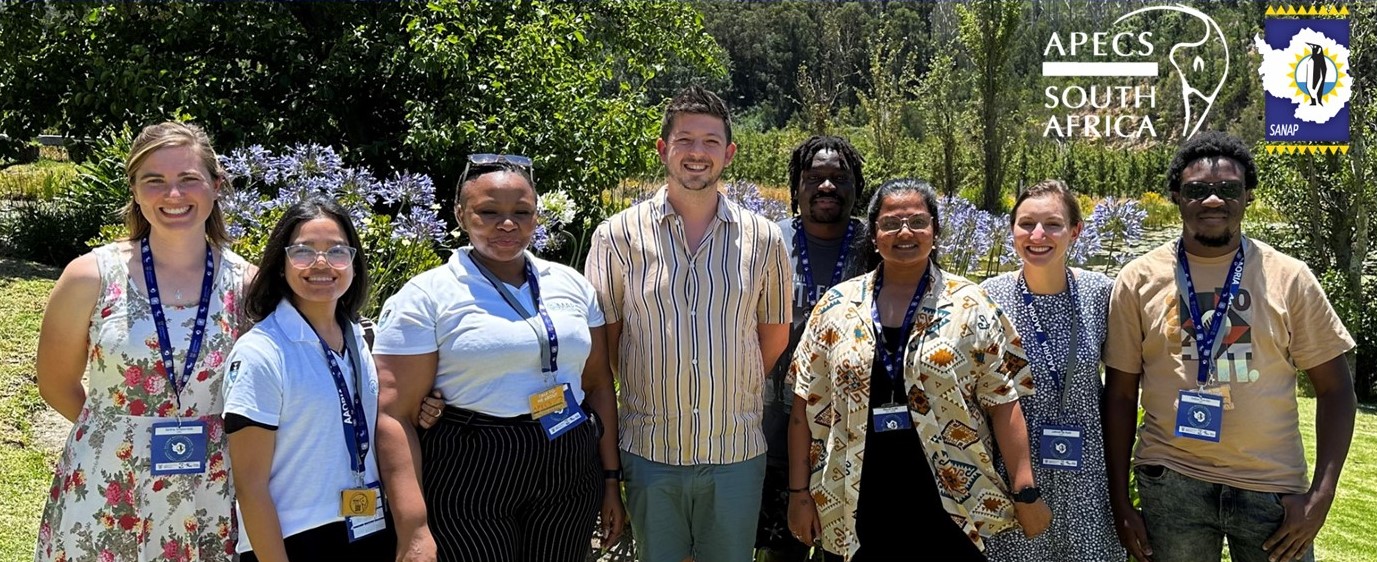 For the first time ever at a SANAP Symposium an Early Career Event was organised by APECS-South Africa. The event was an opportunity to encourage ECRs to become members and to socialise with current members, in fact it was the first time that the current committee had all managed to meet in person and not over zoom. (Above group photo of APECSSA committee members 2024 that were able to attend the Symposium)
For the first time ever at a SANAP Symposium an Early Career Event was organised by APECS-South Africa. The event was an opportunity to encourage ECRs to become members and to socialise with current members, in fact it was the first time that the current committee had all managed to meet in person and not over zoom. (Above group photo of APECSSA committee members 2024 that were able to attend the Symposium)
 APECS-South Africa also wanted to use this time to engage in a community survey with ECRs to discuss important topics around career development and community inclusion. This survey was being conducted anonymously in real time and so provided a safe space for ECRs to raise any concerns they felt within the SANAP community. Most importantly, APECS-South Africa was able to then relay the results of this survey to the PIs and senior leadership of the SANAP community. (Above words used by ECRs to describe their journey, skills they need and what is missing in the organisation)
APECS-South Africa also wanted to use this time to engage in a community survey with ECRs to discuss important topics around career development and community inclusion. This survey was being conducted anonymously in real time and so provided a safe space for ECRs to raise any concerns they felt within the SANAP community. Most importantly, APECS-South Africa was able to then relay the results of this survey to the PIs and senior leadership of the SANAP community. (Above words used by ECRs to describe their journey, skills they need and what is missing in the organisation)

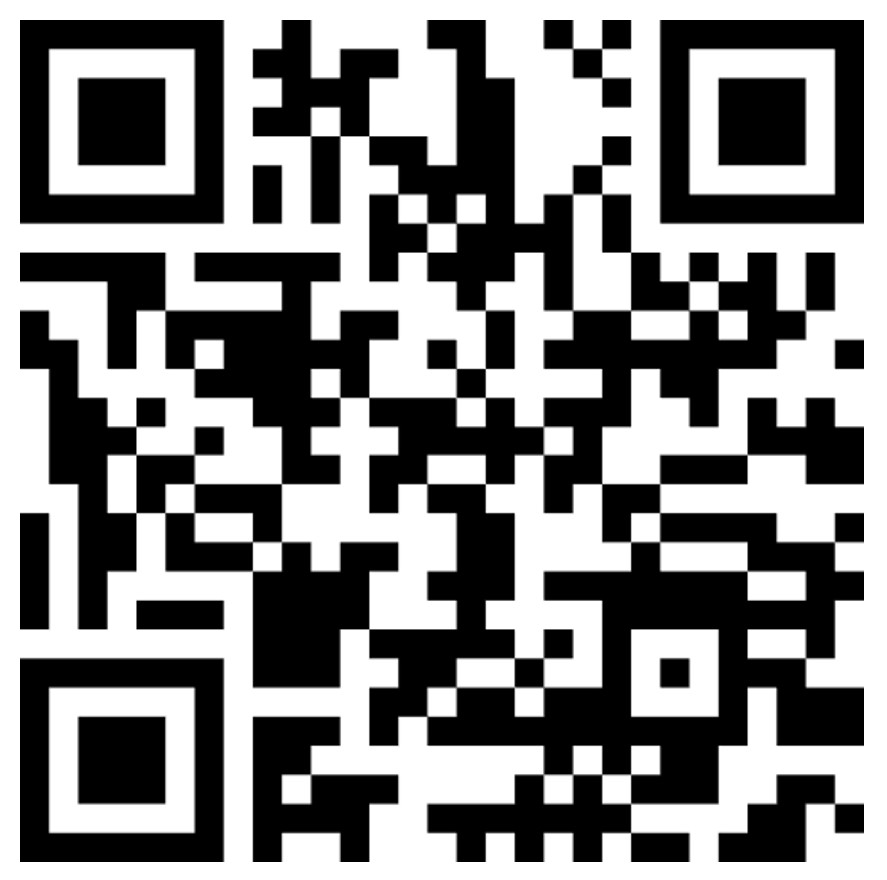 APECS-South Africa plans to continue running this survey going forward at future SANAP Symposiums so that ECRs feel like their voice is being heard and help the SANAP Community become better and more inclusive for everyone. During the workshop ECRs were able to respond to many questions (above ex). If you as an ECR has not yet responded click on the QR Code.
APECS-South Africa plans to continue running this survey going forward at future SANAP Symposiums so that ECRs feel like their voice is being heard and help the SANAP Community become better and more inclusive for everyone. During the workshop ECRs were able to respond to many questions (above ex). If you as an ECR has not yet responded click on the QR Code.
Meet APECSSA 2024 Committee
Full feedback presentation available
(Text, Slides and Group Photo by Tommy Ryan-Keogh.)
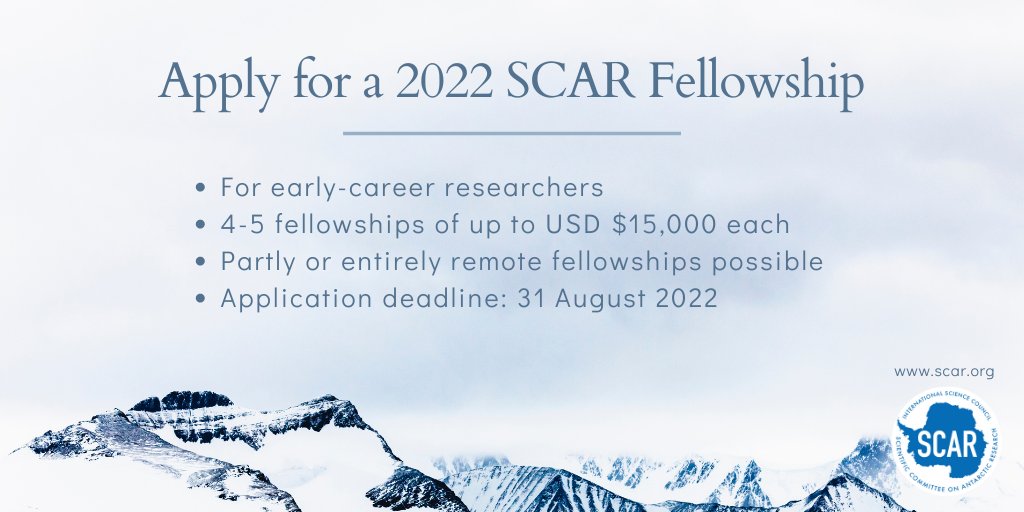
by Ria Olivier | Mar 2, 2022 | Announcement, Antarctica, COMNAP, Fellowship, IAATO, News, Research, SCAR, Southern Ocean, STEM
Attention all early-career researchers (ECRs).
Fellowship opportunities are now available at three Antarctic organisations.
- The Council of Managers of National Antarctic Programs (COMNAP) – offering one fellowship with funding of up to USD $15,000.
- The International Association of Antarctica Tour Operators (IAATO) – offering one fellowship with funding of up to USD $15,000.
- The Scientific Committee on Antarctic Research (SCAR) – offering four or five fellowships with funding of up to USD $15,000 each.
COMNAP, IAATO, and SCAR encourage all talented early-career researchers, scientists, engineers, environmental managers, and those in other early-career professions to apply for these fellowships.
“The purpose is to strengthen international capacity and cooperation in fields such as climate, biodiversity, conservation, humanities and astrophysics research by providing annual funding opportunities” (as per the fellowship announcement).
Application Deadlines:
- COMNAP – 30 June 2022
- IAATO – 30 June 2022
- SCAR – 31 August 2022
For more details: Click here.
Download the relevant information here.
Anche Louw, Antarctic Legacy of South Africa, 02 March 2022
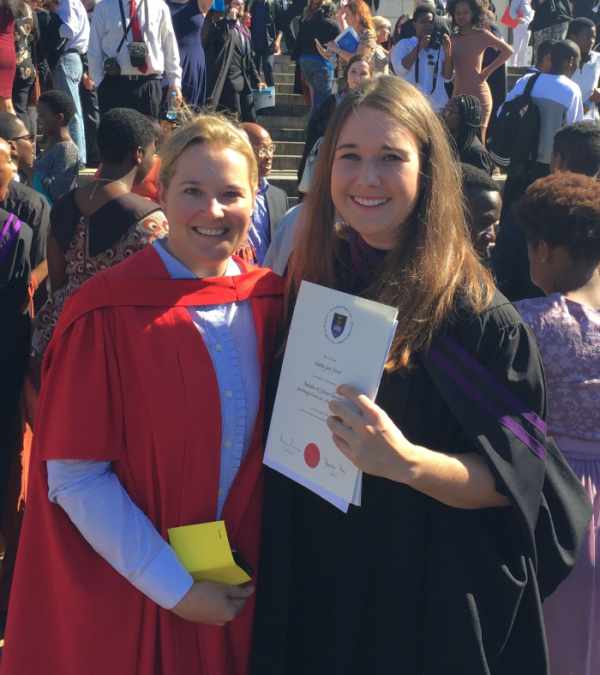
by Ria Olivier | Sep 26, 2020 | Fellowship, Oceanography, Research, SA Agulhas II, SANAP, SANAP Student, Science, Southern Ocean, sub-Antarctic, Women in Science
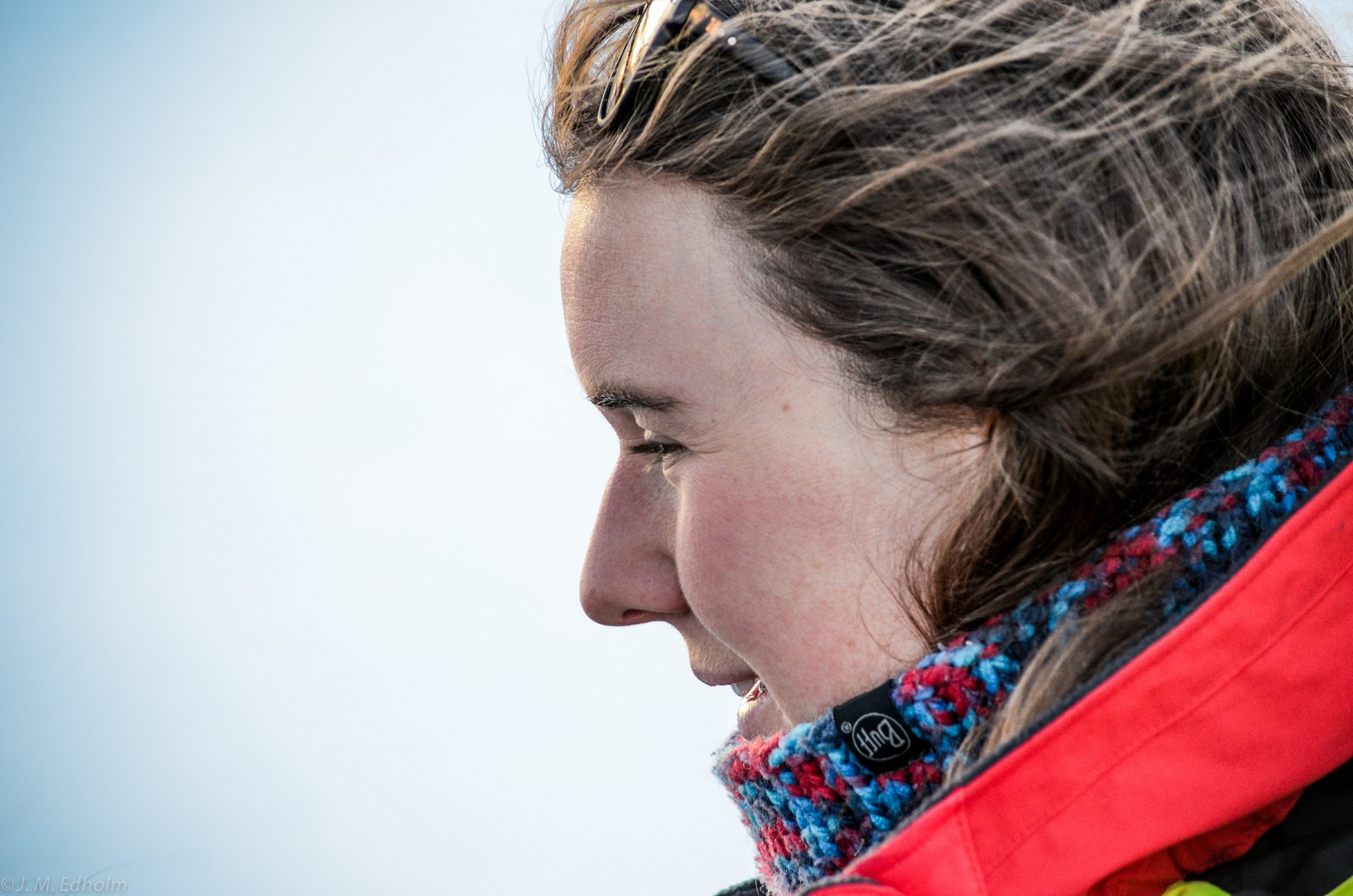 Heather Forrer completed her undergraduate BSc degree at the University of Cape Town (UCT) in 2015, majoring in Ocean and Atmospheric Sciences and Marine Biology. She then went on to complete her Honours degree at UCT in 2016 under the supervision of Dr. Sarah Fawcett where she focused on the nitrogen and oxygen isotopes of nitrate in the summertime Southern Ocean. Her aim was to evaluate the patterns of summertime nutrient utilization across the Atlantic Sector of the Antarctic Zone. Loving everything about Southern Ocean biogeochemical oceanography,
Heather Forrer completed her undergraduate BSc degree at the University of Cape Town (UCT) in 2015, majoring in Ocean and Atmospheric Sciences and Marine Biology. She then went on to complete her Honours degree at UCT in 2016 under the supervision of Dr. Sarah Fawcett where she focused on the nitrogen and oxygen isotopes of nitrate in the summertime Southern Ocean. Her aim was to evaluate the patterns of summertime nutrient utilization across the Atlantic Sector of the Antarctic Zone. Loving everything about Southern Ocean biogeochemical oceanography,  Heather went on to complete a MSc with Dr. Sarah Fawcett and Dr. Angela Knapp (co-advisor, Florida State University (FSU), USA) in 2017 – 2020. Her MSc research focused on a basin-scale approach identifying the drivers of the Indian Sub-Antarctic biological carbon pump, with a special interest in phytoplankton group-specific contributions and the influence of the Island Mass Effect (IME). Heather is now pursuing her PhD at FSU and is taking a deeper look at how the IME enhances carbon export. Her research focuses on the Sub-Antarctic Indian sector as well as Subtropical Pacific, mapping the spatial and temporal carbon export ‘footprint’ of islands across oceans and nutrient regimes.
Heather went on to complete a MSc with Dr. Sarah Fawcett and Dr. Angela Knapp (co-advisor, Florida State University (FSU), USA) in 2017 – 2020. Her MSc research focused on a basin-scale approach identifying the drivers of the Indian Sub-Antarctic biological carbon pump, with a special interest in phytoplankton group-specific contributions and the influence of the Island Mass Effect (IME). Heather is now pursuing her PhD at FSU and is taking a deeper look at how the IME enhances carbon export. Her research focuses on the Sub-Antarctic Indian sector as well as Subtropical Pacific, mapping the spatial and temporal carbon export ‘footprint’ of islands across oceans and nutrient regimes.
In addition to her PhD, Heather is part of the Antarctic Circumnavigation Expedition (ACE) ASAID (air-sea interactions) sub-working group and is a member of the Association of Polar Early Career Scientists South African National Committee (APECSSA). Heather’s work largely falls under the current SANAP Project “A nitrogen cycle view of atmospheric CO2 sequestration in the Antarctic Ocean” (Principal Investigator: Dr. S Fawcett, UCT). Through this, Heather has had the opportunity to participate in a number of research expeditions to the Southern Ocean, present her work at both national and international conferences and attend workshops with international collaborators.
 Born into a family of avid divers, sailors and fisherman, my love for the ocean was instilled in me at a young age. Our dinner table conversations often involve my parents recounting their sailing years on their home-built yacht, reminiscing over past family diving holidays and deciding on which ocean adventure we should embark on next. The vast majority of my childhood holidays were spent wading around rockpools along the South Coast armed with a yellow bucket and red fishing net. My sister and I would collect all the dogfish we managed to coax into our nets and then redistribute them to new rockpool homes based on the size of the fish. Thank goodness the rising tides eventually drove us away and hopefully restored the ecological unrest we most likely caused. This fascination with the small South Coast rockpool ecosystems eventually grew to larger Southeast Asian coral reef biomes in my teenage years. My family immigrated to Vietnam when I was 14, and although moving to a different country was a big culture shock, it opened up a whole new region of marine exploration. Within a couple of months of moving there I became a certified diver and knew that the view from my fogged-up, leaking mask on my first dive had just cemented my future in marine sciences. Upon matriculation, I volunteered for an NGO in southwest Madagascar where I assisted with coral reef studies, looking at both anthropogenic impacts as well as recovery rates from cyclone damage. Knowing that marine sciences was my future, I started my BSc at UCT with a balmy tropical island goal. Well…that was until I met Sarah Fawcett in my 3rd year at UCT… and I quickly traded my sandy feet, beach towel, golden tan dreams for thermal underwear, blisteringly cold winds and the raging Southern Ocean… and have never looked back!
Born into a family of avid divers, sailors and fisherman, my love for the ocean was instilled in me at a young age. Our dinner table conversations often involve my parents recounting their sailing years on their home-built yacht, reminiscing over past family diving holidays and deciding on which ocean adventure we should embark on next. The vast majority of my childhood holidays were spent wading around rockpools along the South Coast armed with a yellow bucket and red fishing net. My sister and I would collect all the dogfish we managed to coax into our nets and then redistribute them to new rockpool homes based on the size of the fish. Thank goodness the rising tides eventually drove us away and hopefully restored the ecological unrest we most likely caused. This fascination with the small South Coast rockpool ecosystems eventually grew to larger Southeast Asian coral reef biomes in my teenage years. My family immigrated to Vietnam when I was 14, and although moving to a different country was a big culture shock, it opened up a whole new region of marine exploration. Within a couple of months of moving there I became a certified diver and knew that the view from my fogged-up, leaking mask on my first dive had just cemented my future in marine sciences. Upon matriculation, I volunteered for an NGO in southwest Madagascar where I assisted with coral reef studies, looking at both anthropogenic impacts as well as recovery rates from cyclone damage. Knowing that marine sciences was my future, I started my BSc at UCT with a balmy tropical island goal. Well…that was until I met Sarah Fawcett in my 3rd year at UCT… and I quickly traded my sandy feet, beach towel, golden tan dreams for thermal underwear, blisteringly cold winds and the raging Southern Ocean… and have never looked back!
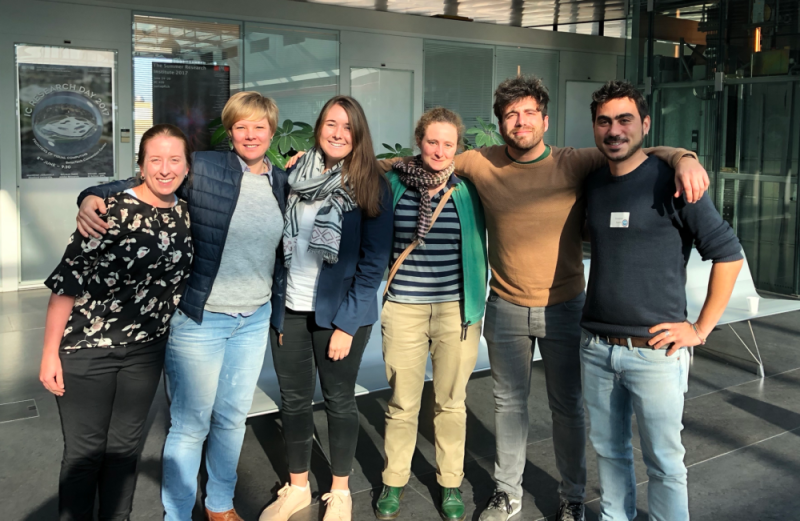
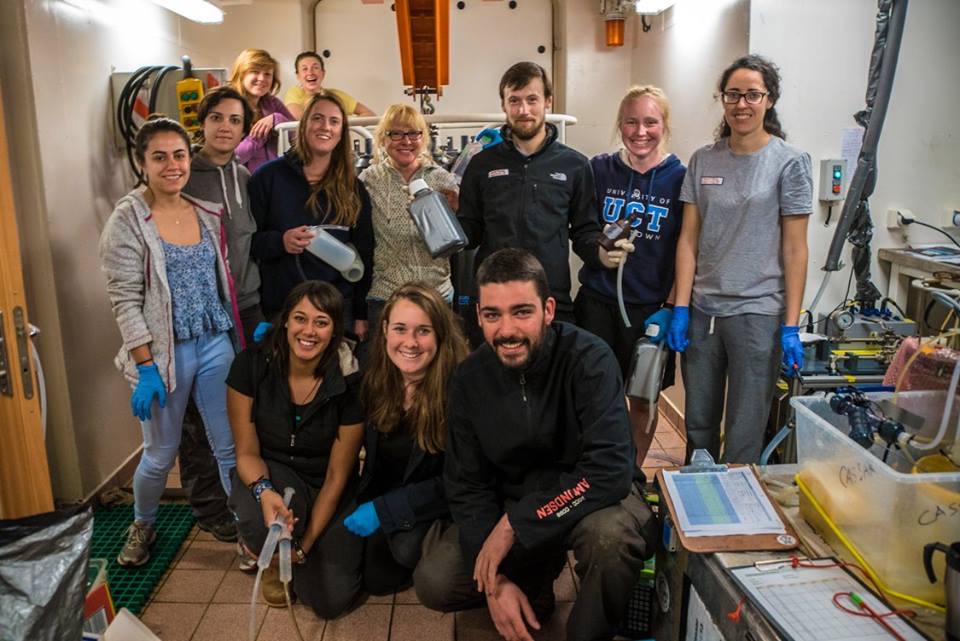 I love my career in science because of the people and the places. There is such a diverse group of people within the SANAP community and we are all striving towards a common goal – to better understand how the world works. All of our fields are so interconnected and through collaborative efforts, you have the opportunity to work with the most incredible scientists, where you get to share ideas and develop some form of understanding…only to have even more questions! Exploring curiosities and having the freedom of imagination is what drives science forward and when I find fellow scientists who share similar questions, this encourages me to continue pushing boundaries of what we know. My career in science has also taken me to the most amazing places – places I could never dream of going to with another career. From boarding a Russian research vessel in Chile, to sampling the nearshore coastline of the sub-Antarctic island of Kerguelen, to analyzing samples in a lab in the US, to data interpretation at a workshop in the UK to presenting my findings to at a conference in Switzerland… I don’t think there is another career path that would allow me to do all that! Earth Science is a constantly engaging and exciting field to be in. Things never stop… even during a pandemic. The amount of incredible discoveries and papers that have been published in 2020 alone is testament to this. The SANAP community is an impressive force, driving cutting-edge science that is crucial to our global understanding of the past, present and future Earth and is a community I am privileged to be a part of.
I love my career in science because of the people and the places. There is such a diverse group of people within the SANAP community and we are all striving towards a common goal – to better understand how the world works. All of our fields are so interconnected and through collaborative efforts, you have the opportunity to work with the most incredible scientists, where you get to share ideas and develop some form of understanding…only to have even more questions! Exploring curiosities and having the freedom of imagination is what drives science forward and when I find fellow scientists who share similar questions, this encourages me to continue pushing boundaries of what we know. My career in science has also taken me to the most amazing places – places I could never dream of going to with another career. From boarding a Russian research vessel in Chile, to sampling the nearshore coastline of the sub-Antarctic island of Kerguelen, to analyzing samples in a lab in the US, to data interpretation at a workshop in the UK to presenting my findings to at a conference in Switzerland… I don’t think there is another career path that would allow me to do all that! Earth Science is a constantly engaging and exciting field to be in. Things never stop… even during a pandemic. The amount of incredible discoveries and papers that have been published in 2020 alone is testament to this. The SANAP community is an impressive force, driving cutting-edge science that is crucial to our global understanding of the past, present and future Earth and is a community I am privileged to be a part of.
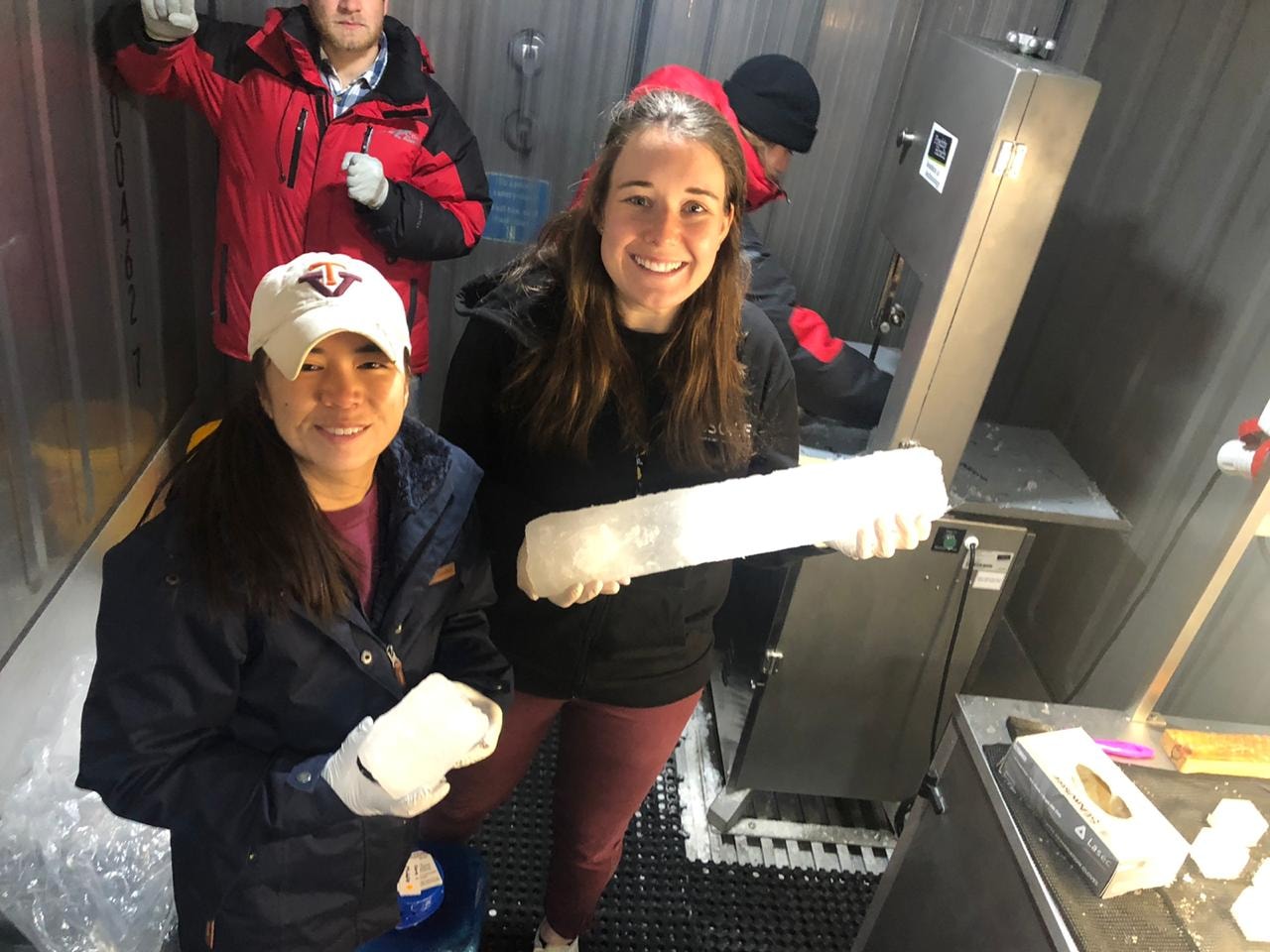
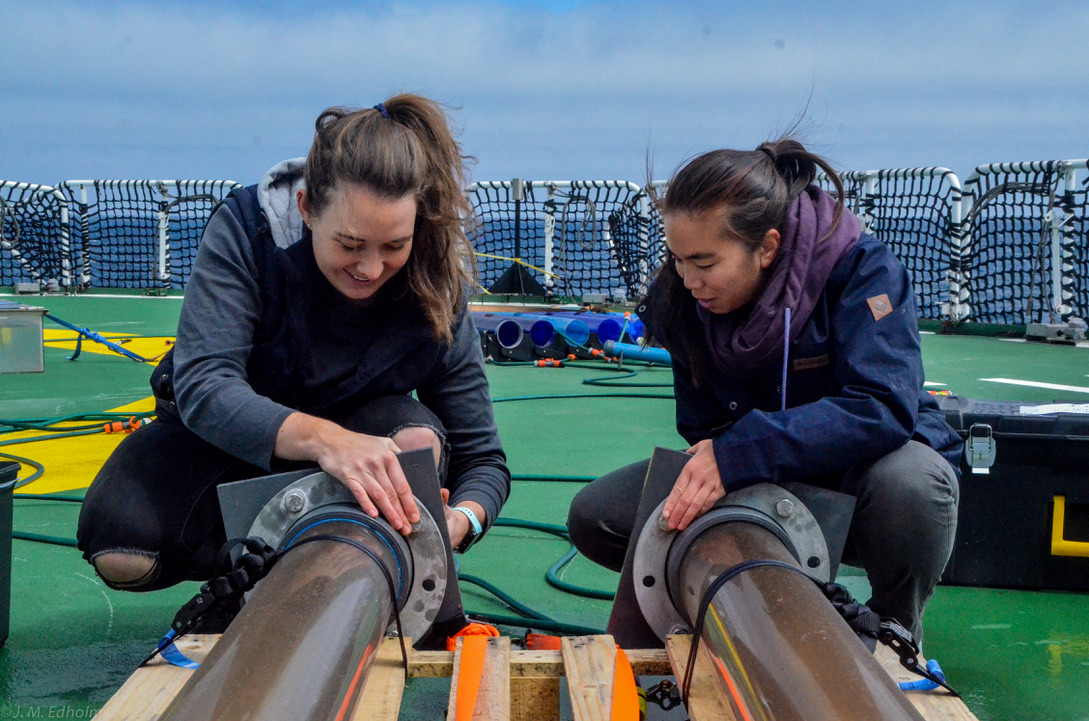
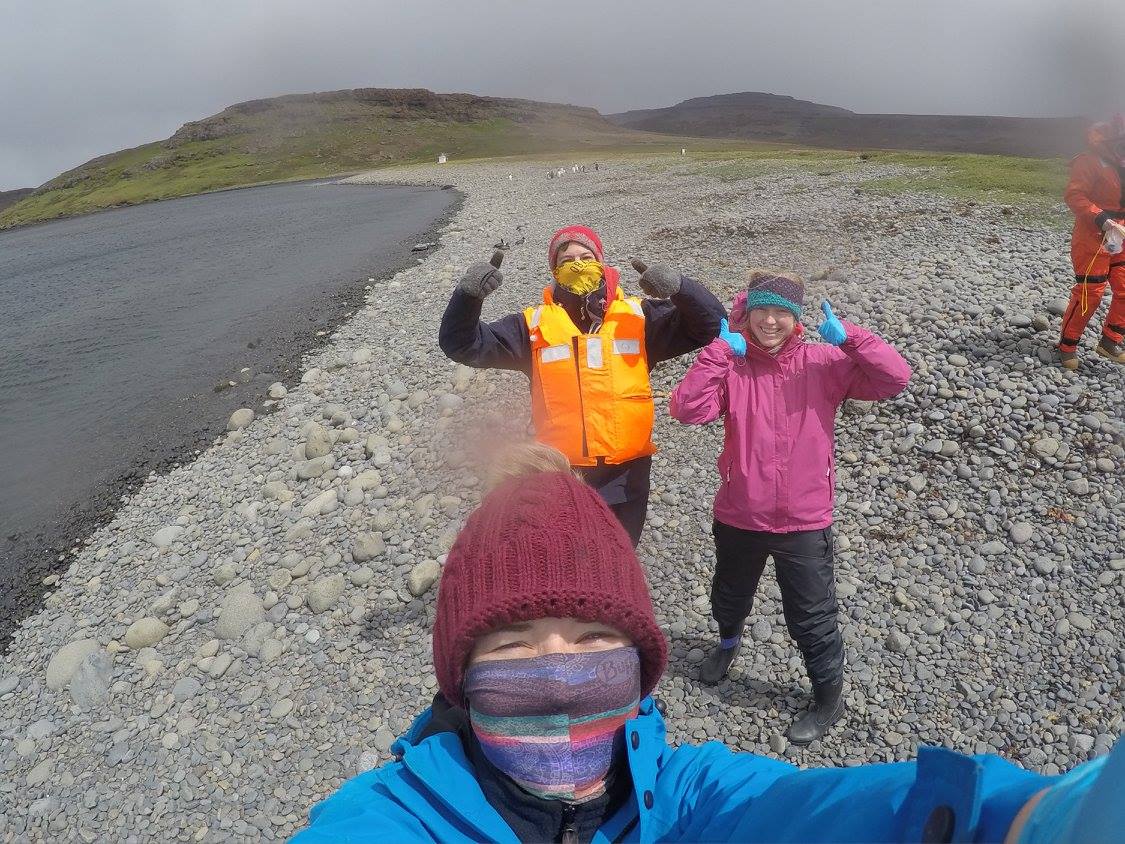 Unlike other career paths, science allows you to follow your passions and ‘immerse’ yourself in different fields. This has allowed me to pursue my interest in Southern Ocean biogeochemical research while being involved in the operational side of Acoustic Doppler Current Profiler (ADCP) and Conductivity Temperature Depth (CTD) sensor deployments and servicing along the South African coastline with the UCT Research Dive Unit. I am happiest when in or on the ocean and to be able to take part in both the research and the operational sides leaves me smiling from ear to ear.
Unlike other career paths, science allows you to follow your passions and ‘immerse’ yourself in different fields. This has allowed me to pursue my interest in Southern Ocean biogeochemical research while being involved in the operational side of Acoustic Doppler Current Profiler (ADCP) and Conductivity Temperature Depth (CTD) sensor deployments and servicing along the South African coastline with the UCT Research Dive Unit. I am happiest when in or on the ocean and to be able to take part in both the research and the operational sides leaves me smiling from ear to ear.


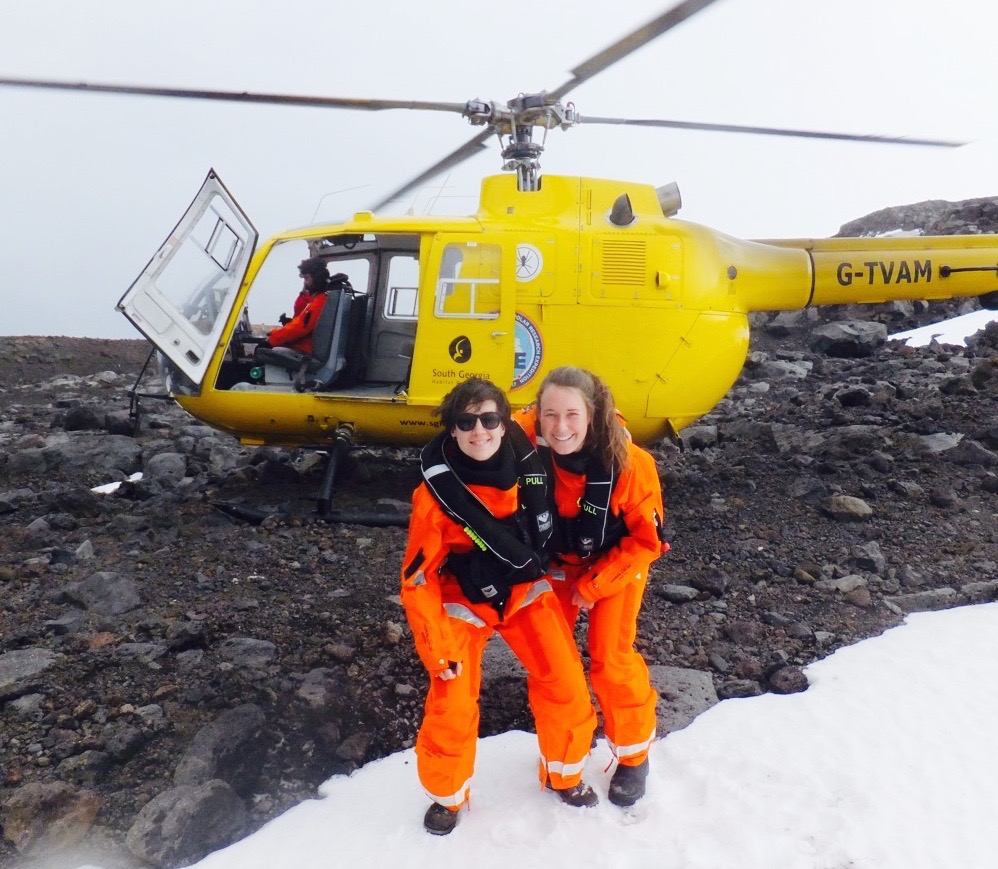 Something that I find incredibly special about a career in science is it is a career your family can be involved in and get excited about. My family have been an amazing source of support throughout my scientific career. They have helped me label over 15,000 sample bottles (the Forrer family bottle labelling production line is something to behold!), load ships, move -80 freezers from East Pier to UCT and create figures for my theses. They have also met me in Switzerland and Australia after workshops or cruises and have read all of my work from beginning to end. Whenever I phone my dad, he always asks “is the ship in town?” and if the answer is “yes” he follows up with “how many bottles do we have to label, when are we loading the ship, how many trailers do we have to tow?” Although I’m still not 100% convinced my parents know exactly what I do, and often hear my mom describing my work to her friends as “the study of whale food that is saving the planet from climate change”, I definitely couldn’t have made it this far without their support, encouragement and enthusiasm.
Something that I find incredibly special about a career in science is it is a career your family can be involved in and get excited about. My family have been an amazing source of support throughout my scientific career. They have helped me label over 15,000 sample bottles (the Forrer family bottle labelling production line is something to behold!), load ships, move -80 freezers from East Pier to UCT and create figures for my theses. They have also met me in Switzerland and Australia after workshops or cruises and have read all of my work from beginning to end. Whenever I phone my dad, he always asks “is the ship in town?” and if the answer is “yes” he follows up with “how many bottles do we have to label, when are we loading the ship, how many trailers do we have to tow?” Although I’m still not 100% convinced my parents know exactly what I do, and often hear my mom describing my work to her friends as “the study of whale food that is saving the planet from climate change”, I definitely couldn’t have made it this far without their support, encouragement and enthusiasm.
 To end, I thought I should share three tips for anyone about to embark on their scientific career:
To end, I thought I should share three tips for anyone about to embark on their scientific career:
- Never be afraid to ask questions… and ask a lot of them! It will help you grow as a scientist, develop your curiosities and make you even more enthusiastic about your work. By asking ALL the questions, I inevitably designed my own PhD research.
- Choose your supervisor carefully and build a good working relationship them. If you are starting a PhD, this working relationship needs to last 5 years, so make it work from the start. Supervisors are only human and can only do so much, the vast majority of the work and drive needs to come from you. I am personally very lucky to have great relationships with both of my supervisors. I started working with Sarah in my Honours year and she is now part of my PhD committee. By the time I complete my PhD, we would have been working together for close to 10 years!
- A science degree takes a village… so build your ‘scientific village’. While there is an ‘i’ in science, it is not an individual pursuit. From sample collection, lab analyses, data interpretation and theses writing, it is all about teamwork. So, start building your network. This can involve fellow grad students, people you meet on research expeditions or at conferences, mentors from other universities etc. While they might not directly participate in your research, they help keep you motivated and excited about your work.
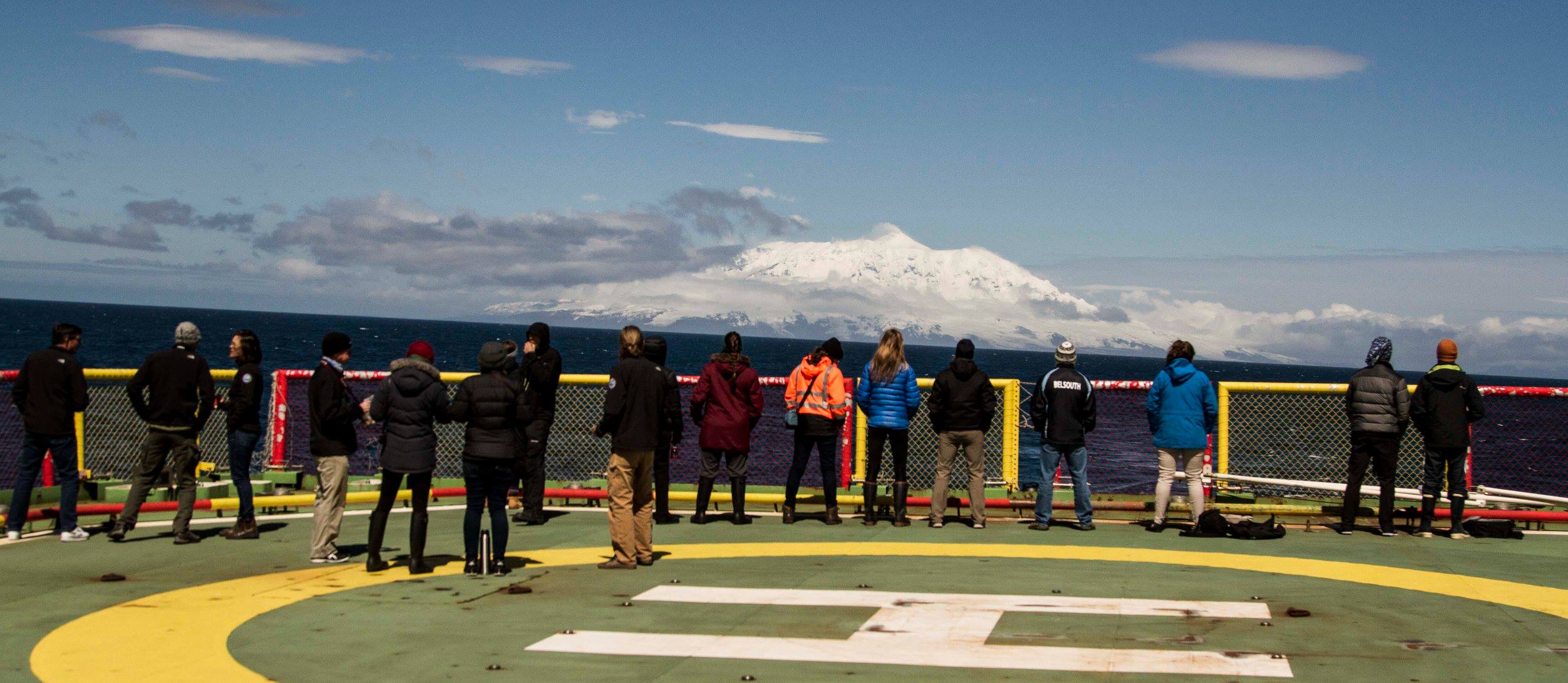 With that, I would like to acknowledge and thank my SANAP and greater South African ‘scientific village’; Dr. Sarah Fawcett (UCT), for your encouragement and support over the last 5 years. Ruan Parrott, Luca Stirnimann and the rest of the Fawcett Lab group for help with sample collection and analyses. Dr. Rosemary Dorrington (RU) and Dr. Tommy Bornman (SAEON) for all your contributions to ACE and the fun workshops. Dr. Bettine van Vuuren (UJ) for always encouraging me to “Just apply! What’s the worst that can happen?”. Cashifa Karriem for holding the UCT Oceanography Department together and helping with the admin side. Tahlia Henry for spending hours driving the CTD to the ocean depths for my deep water samples and for helping me with my (many) technical questions. Dr. Tommy Ryan-Keogh (CSIR) and Dr. Thato Mtshali (CSIR) for showing me the ropes when it comes to trace metal sampling and for helping me design my sampling schemes. Pieter Truter, Hazel Little-Leighton and the rest of the UCT Dive Unit for helping me pack for cruises, make incubators, service pumps and for always braving the icy Atlantic waters with me. And last but certainly not least, the APECSSA National Committee for our fun catch-ups and shared passion for collaboration between young researchers on a local and international level.
With that, I would like to acknowledge and thank my SANAP and greater South African ‘scientific village’; Dr. Sarah Fawcett (UCT), for your encouragement and support over the last 5 years. Ruan Parrott, Luca Stirnimann and the rest of the Fawcett Lab group for help with sample collection and analyses. Dr. Rosemary Dorrington (RU) and Dr. Tommy Bornman (SAEON) for all your contributions to ACE and the fun workshops. Dr. Bettine van Vuuren (UJ) for always encouraging me to “Just apply! What’s the worst that can happen?”. Cashifa Karriem for holding the UCT Oceanography Department together and helping with the admin side. Tahlia Henry for spending hours driving the CTD to the ocean depths for my deep water samples and for helping me with my (many) technical questions. Dr. Tommy Ryan-Keogh (CSIR) and Dr. Thato Mtshali (CSIR) for showing me the ropes when it comes to trace metal sampling and for helping me design my sampling schemes. Pieter Truter, Hazel Little-Leighton and the rest of the UCT Dive Unit for helping me pack for cruises, make incubators, service pumps and for always braving the icy Atlantic waters with me. And last but certainly not least, the APECSSA National Committee for our fun catch-ups and shared passion for collaboration between young researchers on a local and international level.
(Text and images supplied by Heather Forrer)

by Ria Olivier | Sep 25, 2020 | Fellowship, Legacy, Marion Island, SANAP, Science, sub-Antarctic, Uncategorised, Women in Science
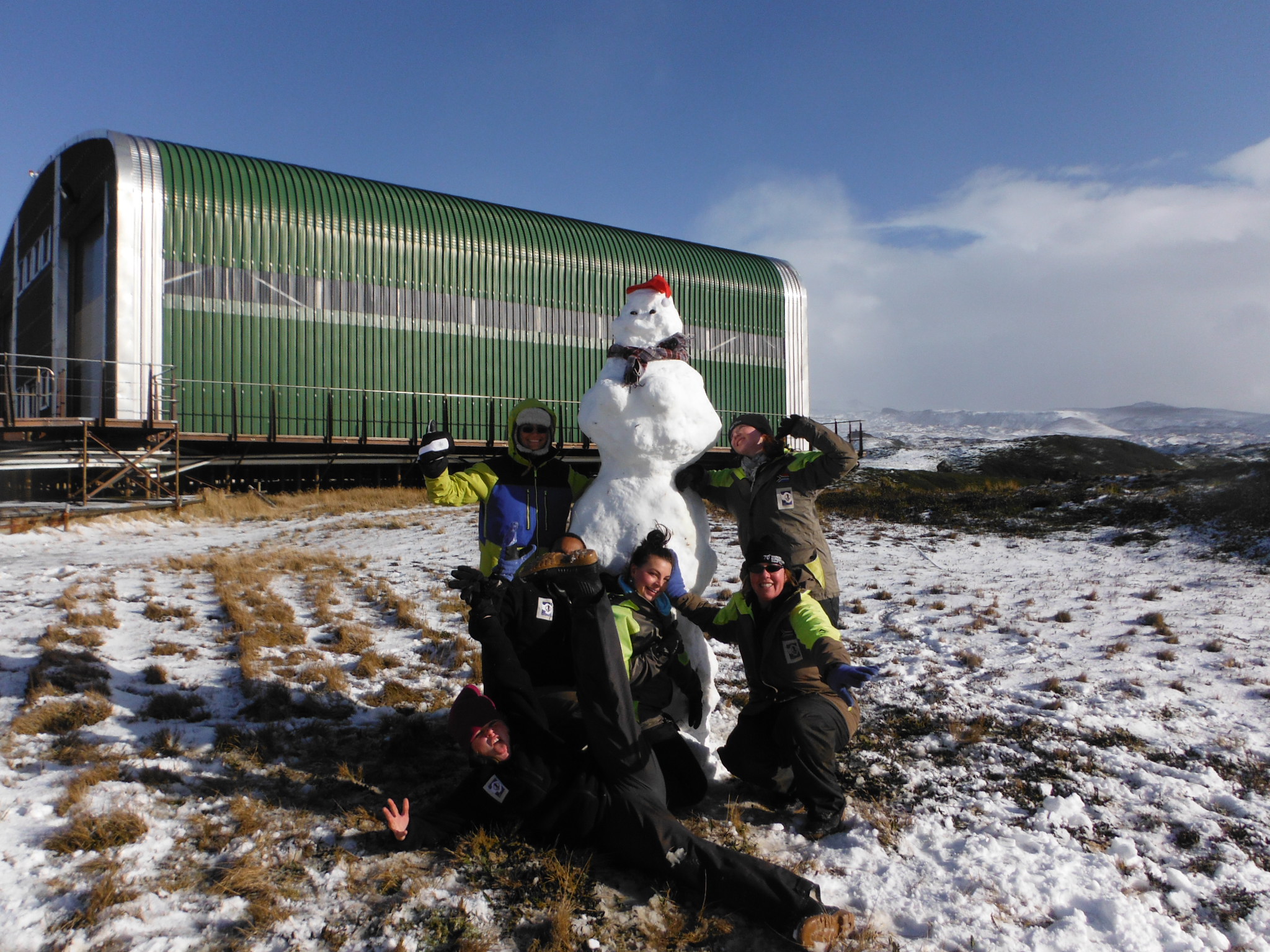
 Mariëtte Wheeler – regular freelancer for Antarctic Legacy of South Africa was born and bred a proud Pretorian girl. But my passion for the ocean developed throughout my childhood as my grandparents lived in Knysna. In my late teens I found myself staring at the ocean, wondering what it looks like beyond the horizon.
Mariëtte Wheeler – regular freelancer for Antarctic Legacy of South Africa was born and bred a proud Pretorian girl. But my passion for the ocean developed throughout my childhood as my grandparents lived in Knysna. In my late teens I found myself staring at the ocean, wondering what it looks like beyond the horizon.
After completing my BSc, BSc honours and MSc in Zoology at the University of Port Elizabeth (currently Nelson Mandela University), I had the opportunity to explore beyond the horizon on Marion Island in 2004–2005 as a member of M61. My PhD was done through the University of Cape Town (with Prof Les Underhill and Dr Marienne de Villiers as supervisors) and University of Pretoria (with Prof Marthán Bester as supervisor). I investigated the effect of human disturbance on the seabirds and seals at Marion Island. My team mates of M61 called me the hybrid birder-sealer as I was fortunate to work on both. I have fond memories of working closely along with the other field workers. For my behavioural observations of the animals I spent days in the cold with semi-frozen fingers and toes, but it was fantastic to be so close to these animals in their natural environment. Chocolate and condensed milk saw me through for energy. I made great friends on this trip who have been standing by me through celebrations but also the difficult times in life.
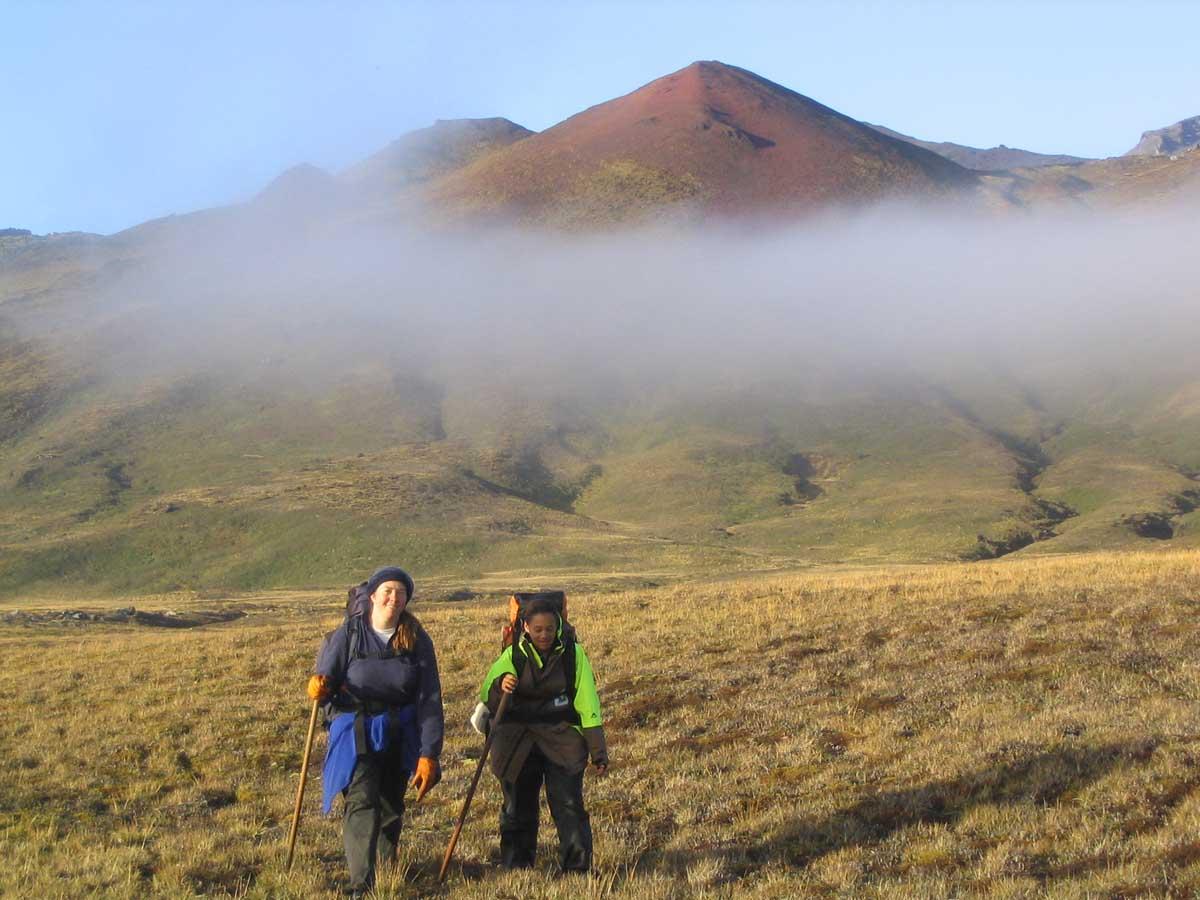 For the second year of my study I had a field assistant Prideel Majiedt on Marion Island and I supervised from here. One of my best round island trips was during the take-over of 2005 with Prideel(right), Marienne and John Cooper. John and I summited a few of the Marion hills. In 2006 I went for take-over to conduct more research on the Wandering Albatrosses.
For the second year of my study I had a field assistant Prideel Majiedt on Marion Island and I supervised from here. One of my best round island trips was during the take-over of 2005 with Prideel(right), Marienne and John Cooper. John and I summited a few of the Marion hills. In 2006 I went for take-over to conduct more research on the Wandering Albatrosses.
After completing my PhD in 2009, I worked for the Southern African Butterfly Conservation Assessment (SABCA) and M2 Environmental Connections (as an environmental consultant). Thereafter I first worked as the manager of the Conservation Leadership Programme of the Endangered Wildlife Trust (EWT) and then as Biodiversity Information Specialist. A highlight in my research career was to give two presentations on my PhD work at the International Polar Year (IPY) 2010 conference in Oslo, Norway. There I also became involved with the Association of Polar Early Career Scientists (APECS). Later that year I was selected to be on the international Executive Committee (ExCom). After my term on the ExCom, I was still actively involved on the Council. In 2012, I was selected as one of the Mail & Guardian’s 200 Young South Africans.
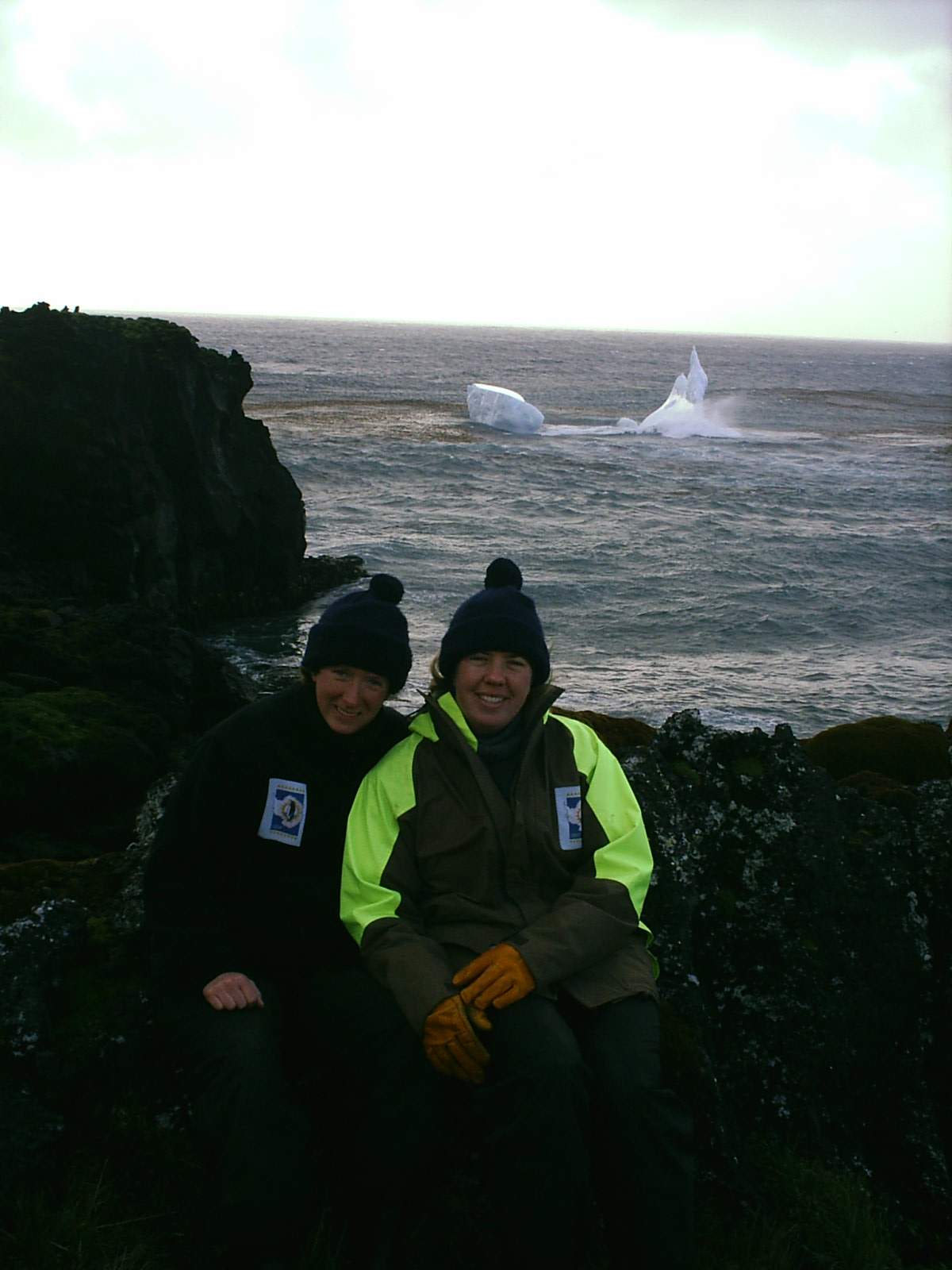 On 27 February 2013, I received a phone call from Bruce Dyer asking if I would be interested to go to Marion Island as their one birder had withdrawn from the team. I had 24 hours to decide! Fortunately the timing was perfect as my contract with EWT was until the end of February. In April 2013 I sailed again to Marion Island as Department of Environment Affairs: Oceans and Coasts birder. What an amazing feeling to see Marion Island again! I therefore had the opportunity to travel on both the SA Agulhas and SA Agulhas II and to live in both the old base and the new base. My previous year on the island was during the construction time, so as a member of M70 I first experienced the isolation of only seeing the “Red Taxi II” a year later. I treasure memories of braai evenings in the braai room with its beautiful views, theme parties and unique hut radio communication.
On 27 February 2013, I received a phone call from Bruce Dyer asking if I would be interested to go to Marion Island as their one birder had withdrawn from the team. I had 24 hours to decide! Fortunately the timing was perfect as my contract with EWT was until the end of February. In April 2013 I sailed again to Marion Island as Department of Environment Affairs: Oceans and Coasts birder. What an amazing feeling to see Marion Island again! I therefore had the opportunity to travel on both the SA Agulhas and SA Agulhas II and to live in both the old base and the new base. My previous year on the island was during the construction time, so as a member of M70 I first experienced the isolation of only seeing the “Red Taxi II” a year later. I treasure memories of braai evenings in the braai room with its beautiful views, theme parties and unique hut radio communication.
After returning from the island, Prof Underhill suggested that I study education. In his words: “There is a difference between having been there to tell a child about an albatross, or just teaching from a textbook”. I completed the Postgraduate Certificate in Education (PGCE) at the University of Cape Town in 2015. During this time I also worked ad hoc. for Antarctic Legacy of South Africa (ALSA) through Facebook communication and spreading awareness at schools.
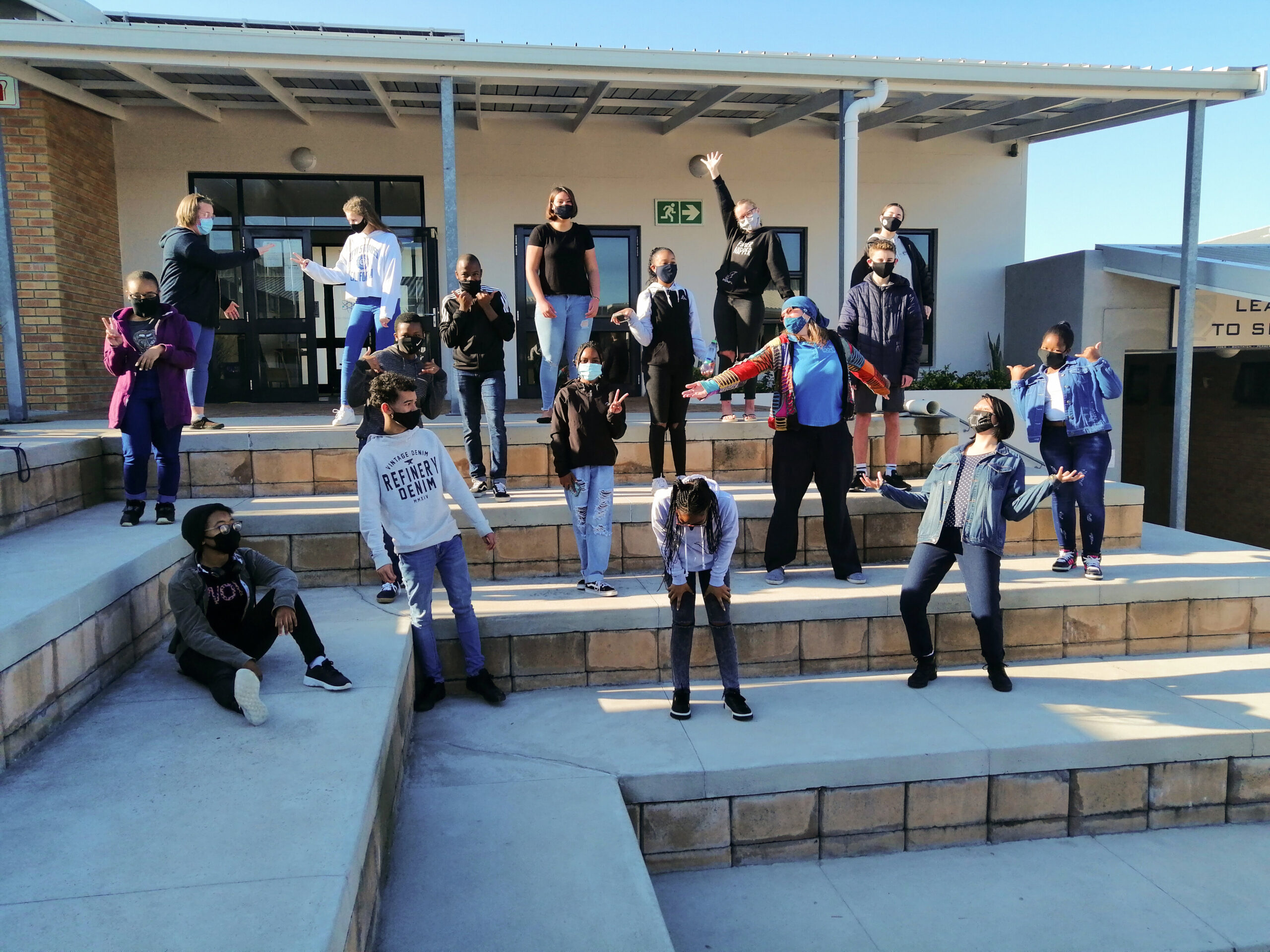 In 2016 I took up a post at Protea Heights Academy in Protea Heights (PHA), Brackenfell teaching Natural Sciences and Life Sciences. In 2018 I taught at a rural community school, Sterkspruit Christian Private School in what used to be Transkei. I lived in the picturesque Lady Grey at the foothills of the Drakensberg. In October 2018 I returned to PHA teaching Life Sciences.
In 2016 I took up a post at Protea Heights Academy in Protea Heights (PHA), Brackenfell teaching Natural Sciences and Life Sciences. In 2018 I taught at a rural community school, Sterkspruit Christian Private School in what used to be Transkei. I lived in the picturesque Lady Grey at the foothills of the Drakensberg. In October 2018 I returned to PHA teaching Life Sciences.
PHA invited Antarctic Legacy of South Africa to take part in our Women In Science event August 2019, where Anche Louw presented on Marion Island to the school hall filled with primary and high school girls and female educators. At one point she asked learners who knew what an albatross looks like to put up their hands. Afterwards my learners proudly told me that they all had their hands up! In 2019 I was selected as 1st Runner up in the National Teacher’s Award for Excellent in Teaching Natural Sciences (GET) for Metro East and North Education Districts.
 From 2020 PHA is one of the 6 nodal schools for the new Gr 10 to 12 subject Marine Sciences, in collaboration with Two Oceans Aquarium (the writers of the curriculum). I am now the departmental head of Marine Sciences, with Shaun Seaward as colleague. I am also teaching Life Sciences. Recently my learners were involved in the first World Albatross Day. Unfortunately due to COVID, plans that John Cooper and I had to get the entire school involved could not realise. With the international Great Albicake Bake Off as inspiration, I asked my learners (who were all still in lockdown) to make, bake, draw or paint anything creative provided that there was at least one albatross on. In this way they all learned more about albatrosses and enjoyed being creative. Antarctic Legacy of South Africa (ALSA) and the Agreement on the Conservation of Albatrosses and Petrels (ACAP) sponsored posters and books as prizes.
From 2020 PHA is one of the 6 nodal schools for the new Gr 10 to 12 subject Marine Sciences, in collaboration with Two Oceans Aquarium (the writers of the curriculum). I am now the departmental head of Marine Sciences, with Shaun Seaward as colleague. I am also teaching Life Sciences. Recently my learners were involved in the first World Albatross Day. Unfortunately due to COVID, plans that John Cooper and I had to get the entire school involved could not realise. With the international Great Albicake Bake Off as inspiration, I asked my learners (who were all still in lockdown) to make, bake, draw or paint anything creative provided that there was at least one albatross on. In this way they all learned more about albatrosses and enjoyed being creative. Antarctic Legacy of South Africa (ALSA) and the Agreement on the Conservation of Albatrosses and Petrels (ACAP) sponsored posters and books as prizes.
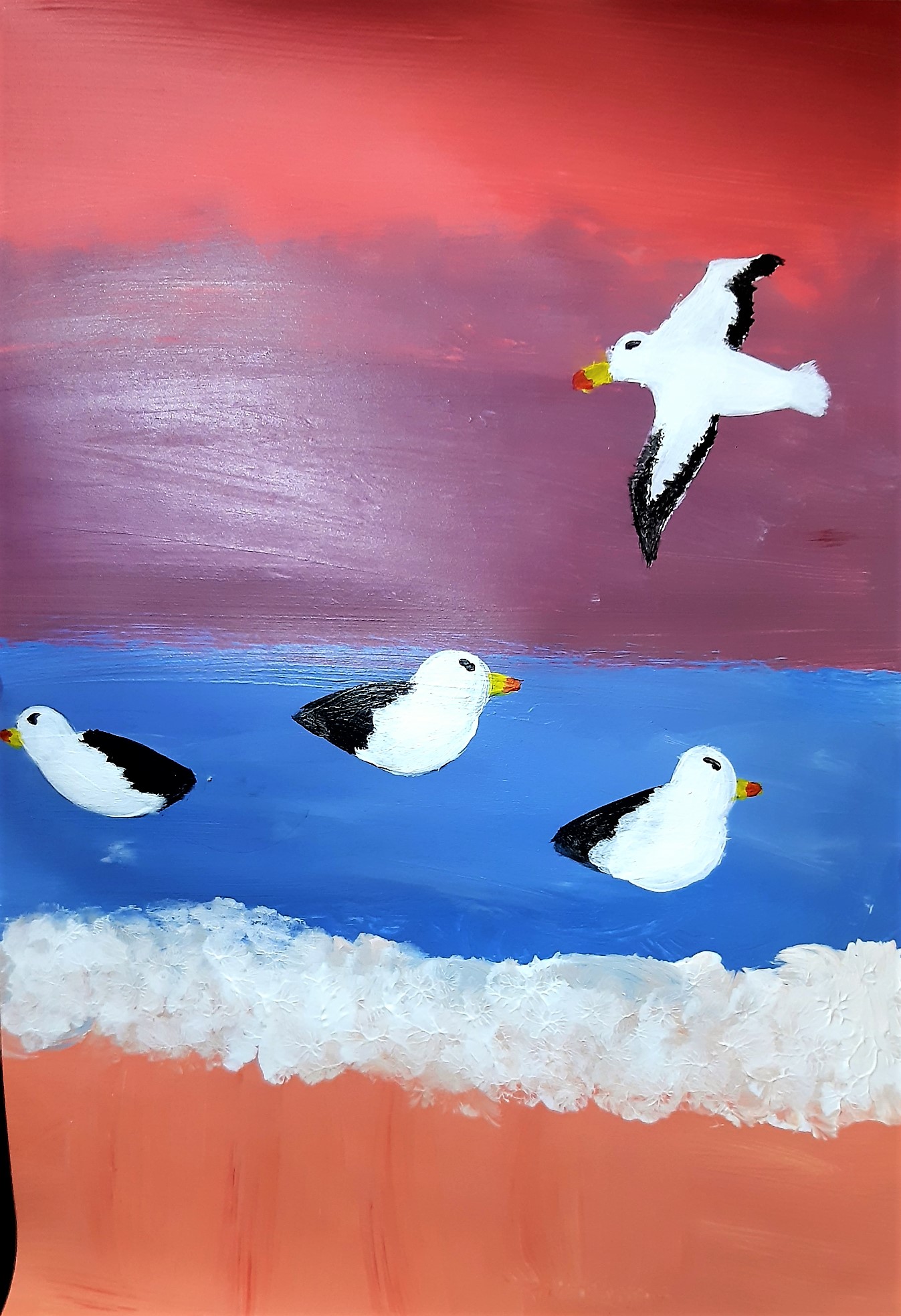


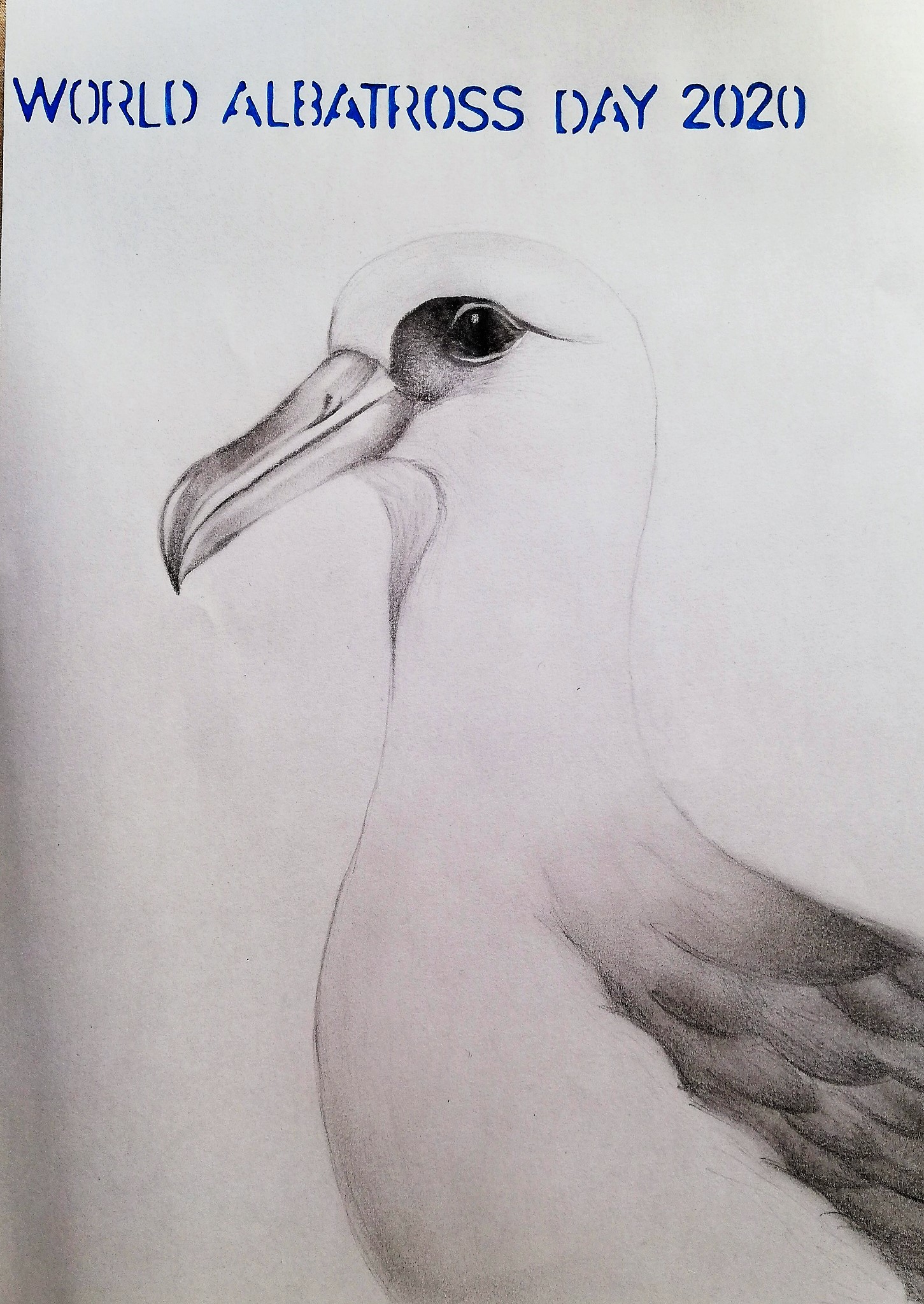
I am blessed that I am able to combine both my passion in marine biology as well as education. Life does not always take you where you thought it would, and sometimes you struggle over symbolic lava such as found at Blackrocks Plateau. But if you “Just keep swimming” as Dory from Finding Nemo said, you will see beauty around you such as the flight of the albatross, a sunset at Swartkop amphitheatre or the smile of a learner. Text and images supplied by Mariette Wheeler. Visit the ALSA archive for more images of Mariette on Marion Island.
Ria Olivier, Antarctic Legacy of South Africa, 25 September 2020.

by Ria Olivier | Aug 9, 2020 | Antarctica, Fellowship, STEM, Women in Science

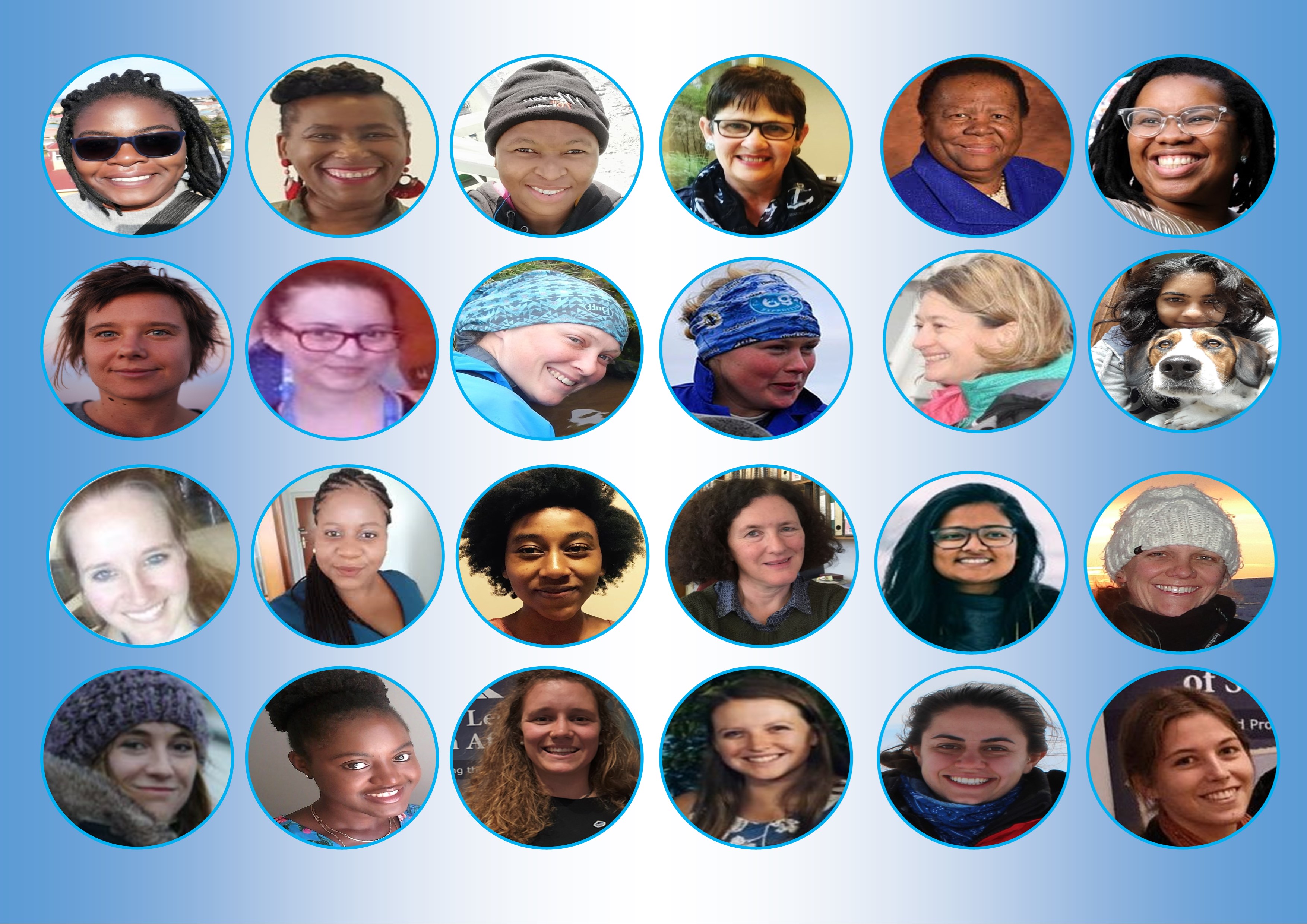
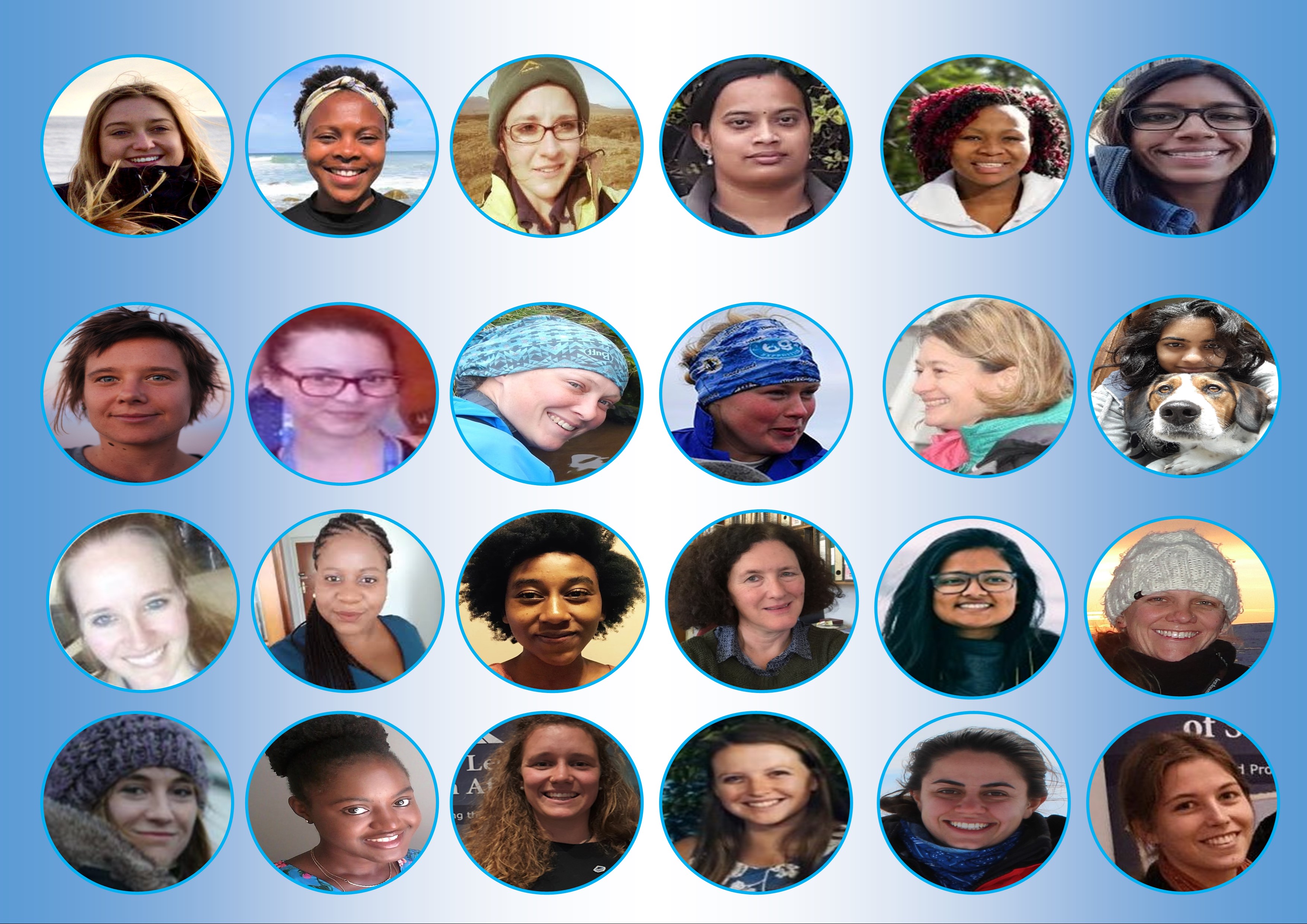 On South Africa’s National Women’s Day we celebrate all the women involved in the South African National Antarctic Programme (SANAP). In the 60 years since the vents of 1956, the phrase has come to represent women’s courage and strength in South Africa. This day is celebrated to empower women and raise awareness. In the last few years many events came about within the Antarctic environment. See the events on the Scientific Committee on Antarctic Research website. In South Africa many women play a leading role within the SANAP.
On South Africa’s National Women’s Day we celebrate all the women involved in the South African National Antarctic Programme (SANAP). In the 60 years since the vents of 1956, the phrase has come to represent women’s courage and strength in South Africa. This day is celebrated to empower women and raise awareness. In the last few years many events came about within the Antarctic environment. See the events on the Scientific Committee on Antarctic Research website. In South Africa many women play a leading role within the SANAP.
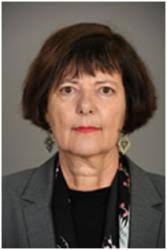
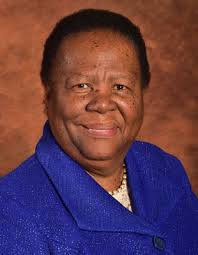
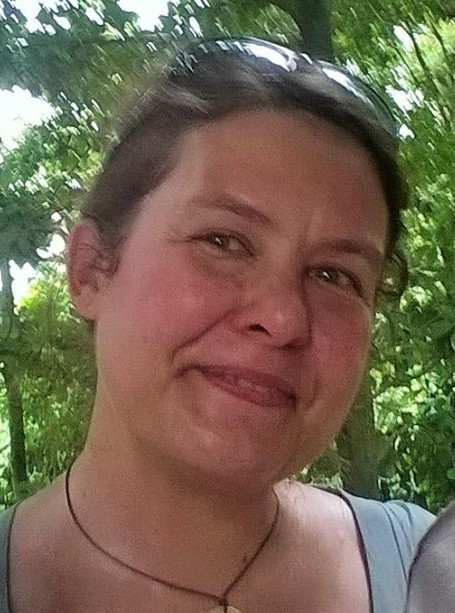 From L-R: The Department of Environment, Fisheries and Forestry: Minister Barbara Creecy; the Department of Science and Innovation: (previous) Minister Naledi Pandor and of the National Research Foundation (NRF) Director: Knowledge Advancement and Support, Tracy Klarenbeek
From L-R: The Department of Environment, Fisheries and Forestry: Minister Barbara Creecy; the Department of Science and Innovation: (previous) Minister Naledi Pandor and of the National Research Foundation (NRF) Director: Knowledge Advancement and Support, Tracy Klarenbeek
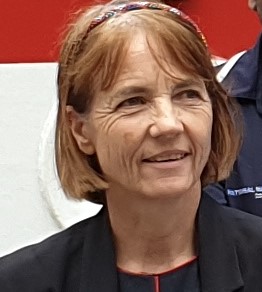
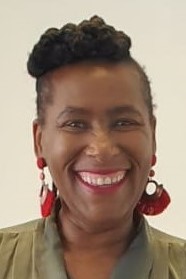
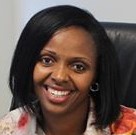 Within the Department of Environment, Fisheries and Forestry; (From L- R) Deputy Director-General Oceans and Coasts: Ms Judy Beaumont, Deputy Director: Vessel and Helicopter Management .Directorate: Southern Oceans and Antarctic Support: Ms Khuselwa Ngxabani; Operations and Logistics. Deputy Director: Chuma Phamoli
Within the Department of Environment, Fisheries and Forestry; (From L- R) Deputy Director-General Oceans and Coasts: Ms Judy Beaumont, Deputy Director: Vessel and Helicopter Management .Directorate: Southern Oceans and Antarctic Support: Ms Khuselwa Ngxabani; Operations and Logistics. Deputy Director: Chuma Phamoli
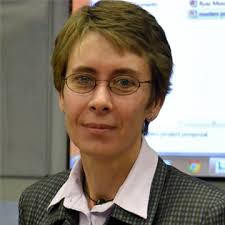
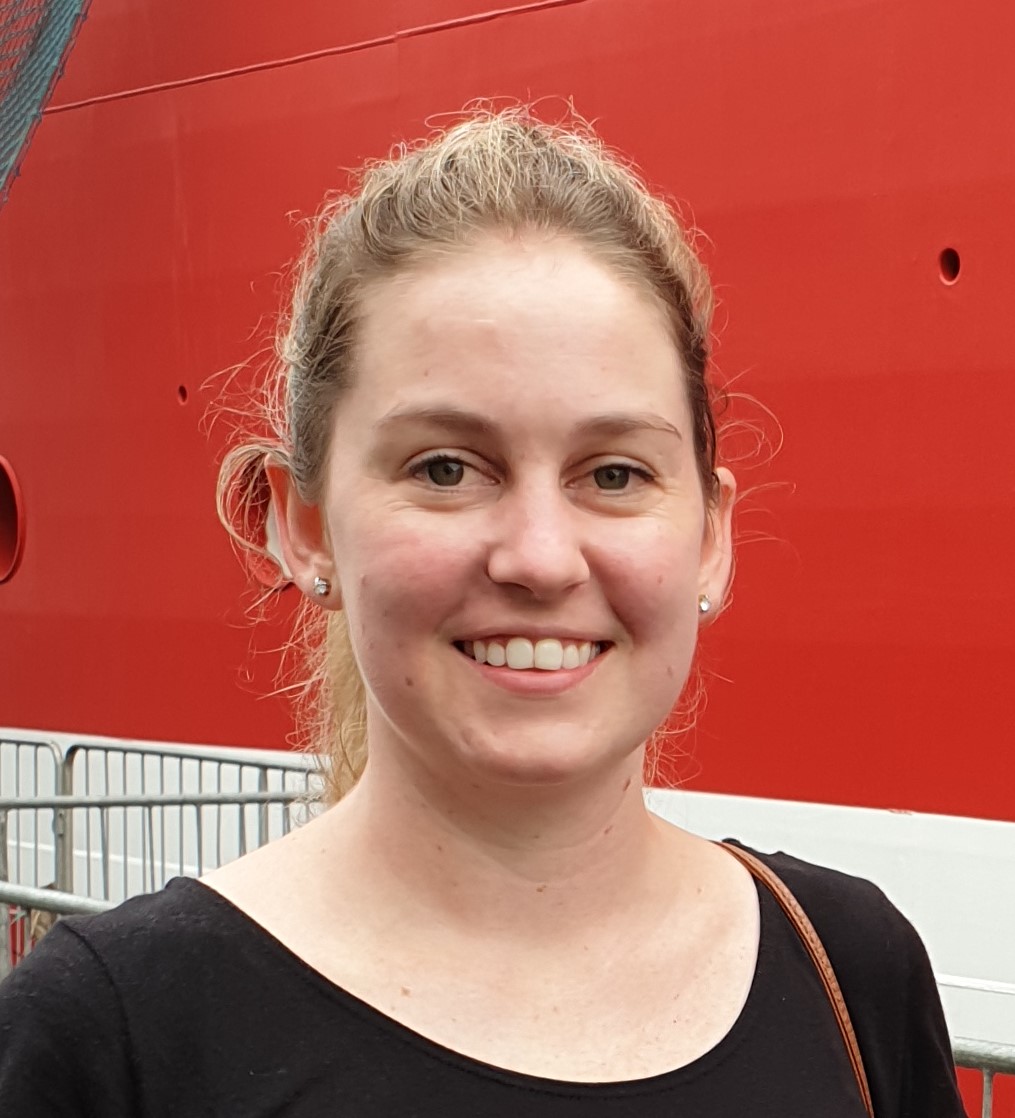
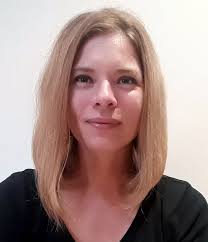
 66% of the South Africa National Committee for SCAR is women and chaired by Bettine Jansen van Vuuren(left). 70% of APECSSA is also women, chaired by Liezel Rudolph(2nd) and the founder member was Christel Hansen(3rd). The Champion for South Africa Gateway City, Cape Town is Rudzani Silima(right).
66% of the South Africa National Committee for SCAR is women and chaired by Bettine Jansen van Vuuren(left). 70% of APECSSA is also women, chaired by Liezel Rudolph(2nd) and the founder member was Christel Hansen(3rd). The Champion for South Africa Gateway City, Cape Town is Rudzani Silima(right).
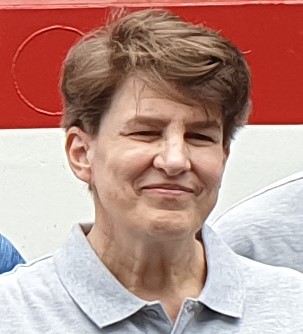

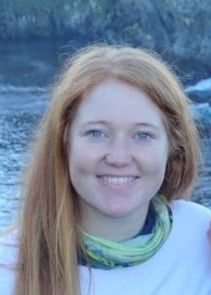 The two team leaders currently at the South African stations on SANAE(59) and at Marion Island(77) are women. Dr Abigail(Aby) Paton (left) is not new to SANAP and the first women to do 3 consecutive overwinters in Antarctica (SANAE54,55,56 see images below). Winnie Moodaley (middle) was a member of Marion 76 and to stayed on as Leader for Marion 77 so this is also her consecutive year. Michelle(Risi)Jones(right) current at Gough Island is part of Gough 64 and Gough 65.
The two team leaders currently at the South African stations on SANAE(59) and at Marion Island(77) are women. Dr Abigail(Aby) Paton (left) is not new to SANAP and the first women to do 3 consecutive overwinters in Antarctica (SANAE54,55,56 see images below). Winnie Moodaley (middle) was a member of Marion 76 and to stayed on as Leader for Marion 77 so this is also her consecutive year. Michelle(Risi)Jones(right) current at Gough Island is part of Gough 64 and Gough 65.

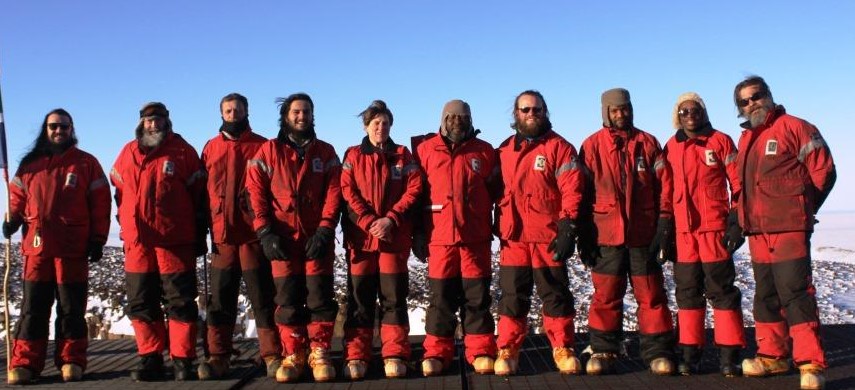
 Gendered Power Relations and Sexual Harassment in Antarctic Science in the Age of #MeToo by Meredith Nash and Hanne Nielsen Published online: 09 Jun 2020. “The presence and impact of female Antarctic researchers has increased rapidly. In the 1950s most countries did not allow women to work in Antarctica and there were few female Antarctic scientists. Today females are playing leading and influential roles in Antarctic research.”
Gendered Power Relations and Sexual Harassment in Antarctic Science in the Age of #MeToo by Meredith Nash and Hanne Nielsen Published online: 09 Jun 2020. “The presence and impact of female Antarctic researchers has increased rapidly. In the 1950s most countries did not allow women to work in Antarctica and there were few female Antarctic scientists. Today females are playing leading and influential roles in Antarctic research.”

 Celebration of Women in Antarctic Research 23 August 2016,Malaysia. This event was a celebration of female Antarctic researchers and aimed to raise their profile to help provide more visible female role models for early career scientists. SANAP was represented(image right).
Celebration of Women in Antarctic Research 23 August 2016,Malaysia. This event was a celebration of female Antarctic researchers and aimed to raise their profile to help provide more visible female role models for early career scientists. SANAP was represented(image right).


- Join the Facebook group Women in Polar Science
- Follow below on Twitter:
- Ocean Women @OceanWomxn
- WomenInScienceSA @OWSD_SA
- Women in Polar Science @WomeninPolarSci
To read more about the women in history of South African National Antarctic Programme visit the Antarctic Legacy of South Africa website

by Ria Olivier | Jul 19, 2020 | Fellowship, Research, SA Agulhas II, SANAP, Science, SEAmester, Southern Ocean

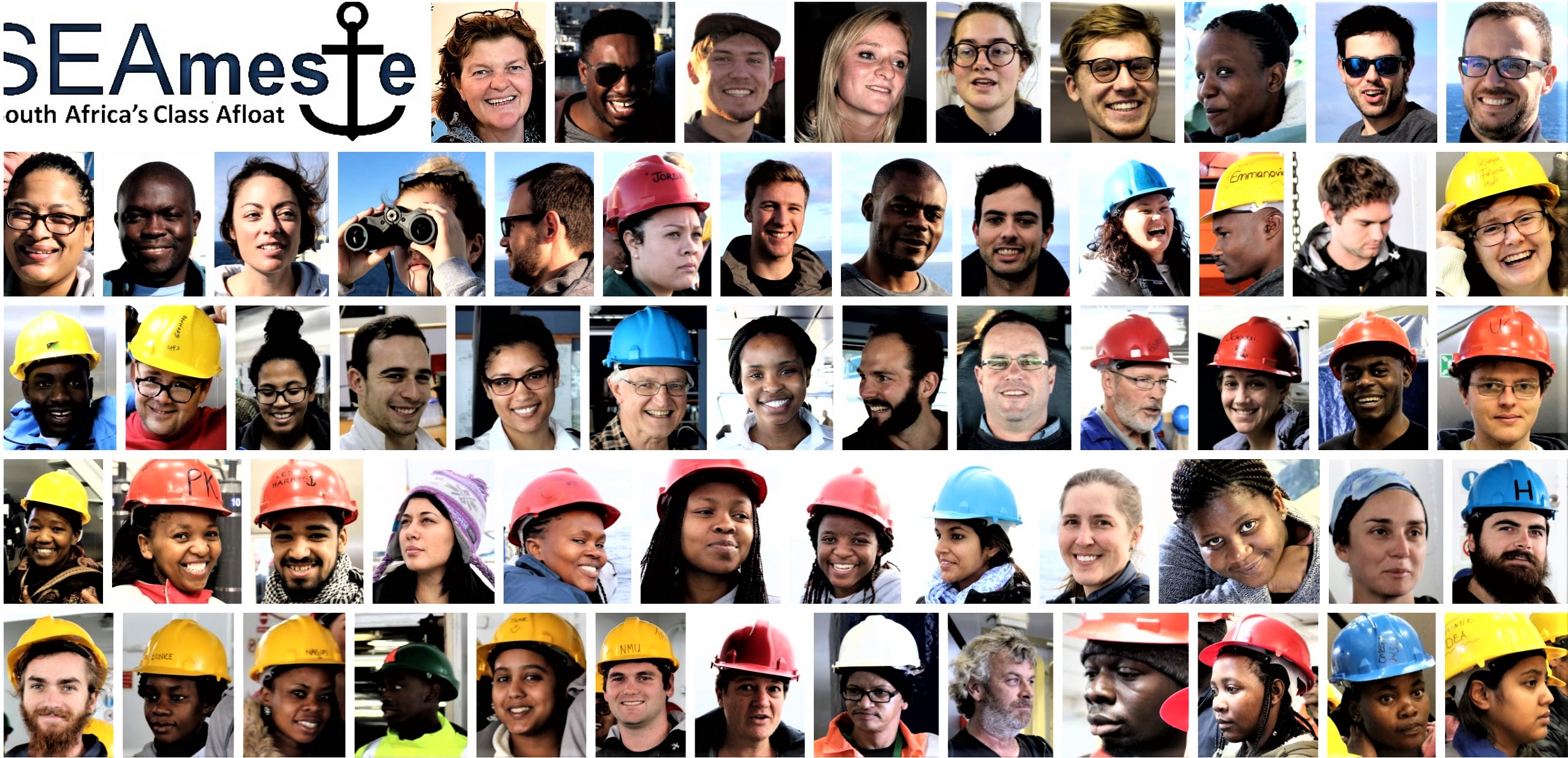 The SEAmester programme is a marine science winter school founded by Prof. Isabelle Ansorge of UCT which takes place at sea and provides the perfect platform for coupling both academic research and learning. Every year approximately 100 students, lecturers and scientists from over 15 different institutions (both local and international) come together for approximately 10 days at sea onboard the SA Agulhas II. SEAmester exposes postgraduate students to multiple different marine science disciplines through daily lectures, practicals, and regular interaction with many professionals conducting their research onboard South Africa’s state of the art research vessel.
The SEAmester programme is a marine science winter school founded by Prof. Isabelle Ansorge of UCT which takes place at sea and provides the perfect platform for coupling both academic research and learning. Every year approximately 100 students, lecturers and scientists from over 15 different institutions (both local and international) come together for approximately 10 days at sea onboard the SA Agulhas II. SEAmester exposes postgraduate students to multiple different marine science disciplines through daily lectures, practicals, and regular interaction with many professionals conducting their research onboard South Africa’s state of the art research vessel.
 3 of the 4 previous SEAmester cruises have sampled the Agulhas System Climate Array (ASCA) transect. ASCA was an array of moorings deployed across the Agulhas Current from April 2016 to May 2018, in order to better understand the physical properties and dynamics of the Agulhas Current. The ASCA project extended the research undertaken along this array during the Agulhas Current Time-series project by continuing to sample the same 20 hydrographic stations. In-situ data in the Agulhas Current is very rare, and the collaborative, multi-disciplinary approach adopted during SEAmester has greatly improved our understanding of the complex Agulhas Current System. More information in paper by Morris et al., 2017 Above: Location of the stations sampled during SEAmester. Figure by James Maitland.
3 of the 4 previous SEAmester cruises have sampled the Agulhas System Climate Array (ASCA) transect. ASCA was an array of moorings deployed across the Agulhas Current from April 2016 to May 2018, in order to better understand the physical properties and dynamics of the Agulhas Current. The ASCA project extended the research undertaken along this array during the Agulhas Current Time-series project by continuing to sample the same 20 hydrographic stations. In-situ data in the Agulhas Current is very rare, and the collaborative, multi-disciplinary approach adopted during SEAmester has greatly improved our understanding of the complex Agulhas Current System. More information in paper by Morris et al., 2017 Above: Location of the stations sampled during SEAmester. Figure by James Maitland.
 Left: Last year during SEAmester IV we experienced 3 consecutive cold fronts with resulting waves of up to 10m in size. This rough weather meant we were only able to sample 16 out of 20 of our planned stations. Photo credit: Thando Mazomba
Left: Last year during SEAmester IV we experienced 3 consecutive cold fronts with resulting waves of up to 10m in size. This rough weather meant we were only able to sample 16 out of 20 of our planned stations. Photo credit: Thando Mazomba
Sampling during SEAmester IV has included physical oceanography, biogeochemistry, phytoplankton, zooplankton, ichthyoplankton, microplastics, marine parasites, marine bacteria, marine seabirds and mammals, meteorology, benthic dredge sampling and more. SEAmester has provided an incredible opportunity for scientists from different disciples to work together and at the same time providing students with invaluable seagoing experience. The 5th SEAmester cruise which was due to take place this week has unfortunately been postponed until next year due to COVID-19.
 SEAmester has changed the lives of students! “Department of Science and Innovation’s 10-year Global Change Grand Challenge programme requires platforms to ‘attract young researchers and retain them by exciting their interest in aspects of global change; while developing their capacity and professional skills in the relevant fields of investigation.” – Isabelle Ansorge
SEAmester has changed the lives of students! “Department of Science and Innovation’s 10-year Global Change Grand Challenge programme requires platforms to ‘attract young researchers and retain them by exciting their interest in aspects of global change; while developing their capacity and professional skills in the relevant fields of investigation.” – Isabelle Ansorge
- “This programme has been the best experience in my life. It changed my outlook on how to gather knowledge, where to do research, how to think logically as well as to be creative and intuitive”
- “I have made so many new friends and build up my contacts for future endeavours”
- “SEAmester has made me realise that I have a passion for ocean-based research”
- “It has greatly influenced my general career goals and aims”
- “I really enjoyed meeting so many people from a diverse range of backgrounds and sciences”
- “I loved the way the content of SEAmester has helped me to link up all the theory that I have learnt over the years”
- “SEAmester was the best experience of my life”
- “I hope that SEAmester will continue in years so other students get the chance to have such an awesome experience”
- “I have been changed positively by this course – I am more motivated to tackle my studies”
- Just being together as a team – it didn’t matter what your background was”
- “It was a time of my life that I will never ever forget”
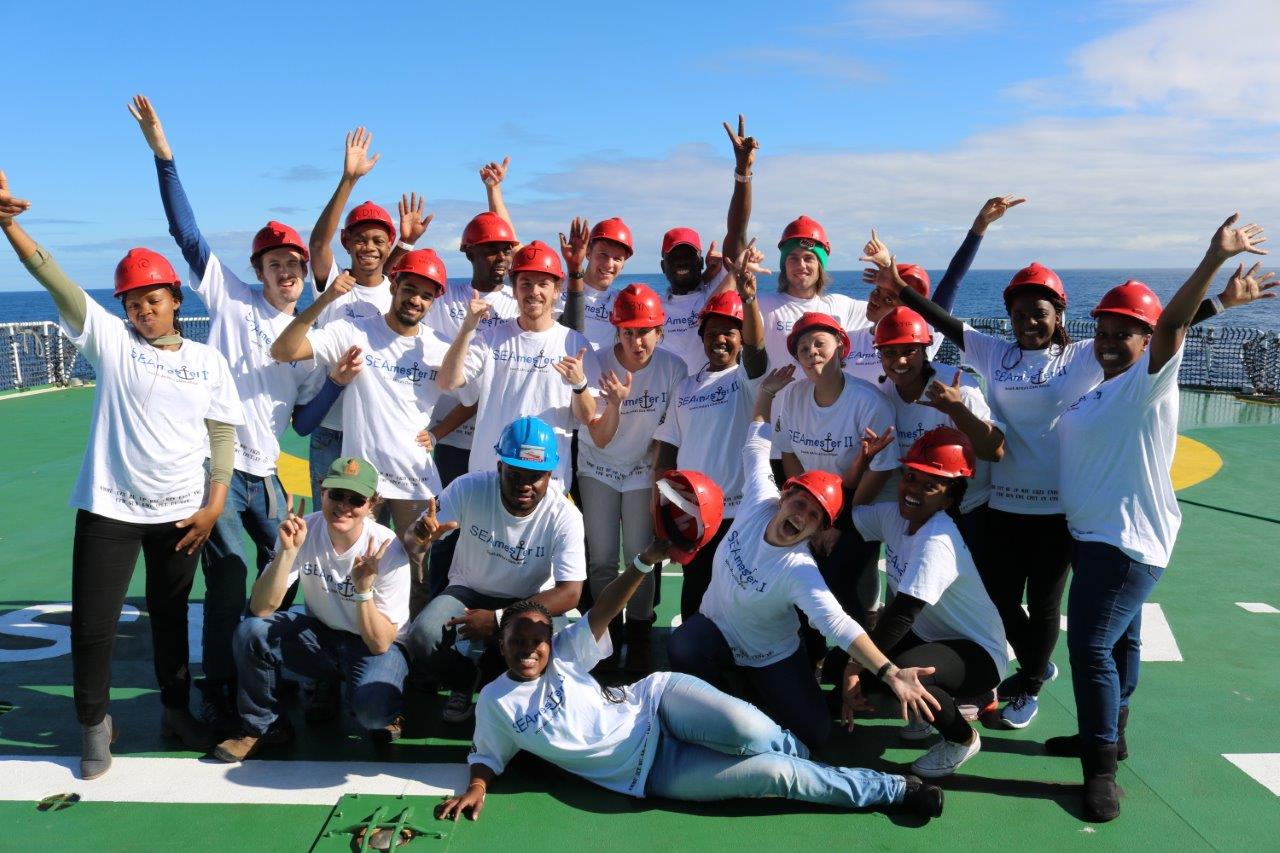
 Text Supplied by Laura Braby – SAEON- Egagasini Node. Student Comments supplied by Isabelle Ansorge. Images available on Antarctic Legacy of South Africa Archive. More videos and images available at www.seamester.co.za
Text Supplied by Laura Braby – SAEON- Egagasini Node. Student Comments supplied by Isabelle Ansorge. Images available on Antarctic Legacy of South Africa Archive. More videos and images available at www.seamester.co.za

 For the first time ever at a SANAP Symposium an Early Career Event was organised by APECS-South Africa. The event was an opportunity to encourage ECRs to become members and to socialise with current members, in fact it was the first time that the current committee had all managed to meet in person and not over zoom. (Above group photo of APECSSA committee members 2024 that were able to attend the Symposium)
For the first time ever at a SANAP Symposium an Early Career Event was organised by APECS-South Africa. The event was an opportunity to encourage ECRs to become members and to socialise with current members, in fact it was the first time that the current committee had all managed to meet in person and not over zoom. (Above group photo of APECSSA committee members 2024 that were able to attend the Symposium) APECS-South Africa also wanted to use this time to engage in a community survey with ECRs to discuss important topics around career development and community inclusion. This survey was being conducted anonymously in real time and so provided a safe space for ECRs to raise any concerns they felt within the SANAP community. Most importantly, APECS-South Africa was able to then relay the results of this survey to the PIs and senior leadership of the SANAP community. (Above words used by ECRs to describe their journey, skills they need and what is missing in the organisation)
APECS-South Africa also wanted to use this time to engage in a community survey with ECRs to discuss important topics around career development and community inclusion. This survey was being conducted anonymously in real time and so provided a safe space for ECRs to raise any concerns they felt within the SANAP community. Most importantly, APECS-South Africa was able to then relay the results of this survey to the PIs and senior leadership of the SANAP community. (Above words used by ECRs to describe their journey, skills they need and what is missing in the organisation)
 APECS-South Africa plans to continue running this survey going forward at future SANAP Symposiums so that ECRs feel like their voice is being heard and help the SANAP Community become better and more inclusive for everyone. During the workshop ECRs were able to respond to many questions (above ex). If you as an ECR has not yet responded click on the QR Code.
APECS-South Africa plans to continue running this survey going forward at future SANAP Symposiums so that ECRs feel like their voice is being heard and help the SANAP Community become better and more inclusive for everyone. During the workshop ECRs were able to respond to many questions (above ex). If you as an ECR has not yet responded click on the QR Code.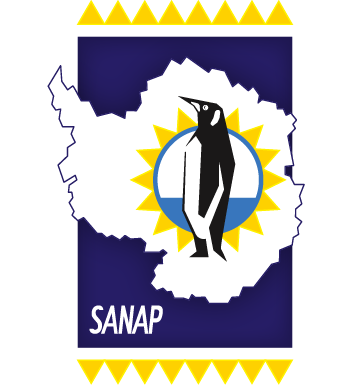


 Heather Forrer completed her undergraduate BSc degree at the University of Cape Town (UCT) in 2015, majoring in Ocean and Atmospheric Sciences and Marine Biology. She then went on to complete her Honours degree at UCT in 2016 under the supervision of Dr. Sarah Fawcett where she focused on the nitrogen and oxygen isotopes of nitrate in the summertime Southern Ocean. Her aim was to evaluate the patterns of summertime nutrient utilization across the Atlantic Sector of the Antarctic Zone. Loving everything about Southern Ocean biogeochemical oceanography,
Heather Forrer completed her undergraduate BSc degree at the University of Cape Town (UCT) in 2015, majoring in Ocean and Atmospheric Sciences and Marine Biology. She then went on to complete her Honours degree at UCT in 2016 under the supervision of Dr. Sarah Fawcett where she focused on the nitrogen and oxygen isotopes of nitrate in the summertime Southern Ocean. Her aim was to evaluate the patterns of summertime nutrient utilization across the Atlantic Sector of the Antarctic Zone. Loving everything about Southern Ocean biogeochemical oceanography,  Heather went on to complete a MSc with Dr. Sarah Fawcett and Dr. Angela Knapp (co-advisor, Florida State University (FSU), USA) in 2017 – 2020. Her MSc research focused on a basin-scale approach identifying the drivers of the Indian Sub-Antarctic biological carbon pump, with a special interest in phytoplankton group-specific contributions and the influence of the Island Mass Effect (IME). Heather is now pursuing her PhD at FSU and is taking a deeper look at how the IME enhances carbon export. Her research focuses on the Sub-Antarctic Indian sector as well as Subtropical Pacific, mapping the spatial and temporal carbon export ‘footprint’ of islands across oceans and nutrient regimes.
Heather went on to complete a MSc with Dr. Sarah Fawcett and Dr. Angela Knapp (co-advisor, Florida State University (FSU), USA) in 2017 – 2020. Her MSc research focused on a basin-scale approach identifying the drivers of the Indian Sub-Antarctic biological carbon pump, with a special interest in phytoplankton group-specific contributions and the influence of the Island Mass Effect (IME). Heather is now pursuing her PhD at FSU and is taking a deeper look at how the IME enhances carbon export. Her research focuses on the Sub-Antarctic Indian sector as well as Subtropical Pacific, mapping the spatial and temporal carbon export ‘footprint’ of islands across oceans and nutrient regimes. Born into a family of avid divers, sailors and fisherman, my love for the ocean was instilled in me at a young age. Our dinner table conversations often involve my parents recounting their sailing years on their home-built yacht, reminiscing over past family diving holidays and deciding on which ocean adventure we should embark on next. The vast majority of my childhood holidays were spent wading around rockpools along the South Coast armed with a yellow bucket and red fishing net. My sister and I would collect all the dogfish we managed to coax into our nets and then redistribute them to new rockpool homes based on the size of the fish. Thank goodness the rising tides eventually drove us away and hopefully restored the ecological unrest we most likely caused. This fascination with the small South Coast rockpool ecosystems eventually grew to larger Southeast Asian coral reef biomes in my teenage years. My family immigrated to Vietnam when I was 14, and although moving to a different country was a big culture shock, it opened up a whole new region of marine exploration. Within a couple of months of moving there I became a certified diver and knew that the view from my fogged-up, leaking mask on my first dive had just cemented my future in marine sciences. Upon matriculation, I volunteered for an NGO in southwest Madagascar where I assisted with coral reef studies, looking at both anthropogenic impacts as well as recovery rates from cyclone damage. Knowing that marine sciences was my future, I started my BSc at UCT with a balmy tropical island goal. Well…that was until I met
Born into a family of avid divers, sailors and fisherman, my love for the ocean was instilled in me at a young age. Our dinner table conversations often involve my parents recounting their sailing years on their home-built yacht, reminiscing over past family diving holidays and deciding on which ocean adventure we should embark on next. The vast majority of my childhood holidays were spent wading around rockpools along the South Coast armed with a yellow bucket and red fishing net. My sister and I would collect all the dogfish we managed to coax into our nets and then redistribute them to new rockpool homes based on the size of the fish. Thank goodness the rising tides eventually drove us away and hopefully restored the ecological unrest we most likely caused. This fascination with the small South Coast rockpool ecosystems eventually grew to larger Southeast Asian coral reef biomes in my teenage years. My family immigrated to Vietnam when I was 14, and although moving to a different country was a big culture shock, it opened up a whole new region of marine exploration. Within a couple of months of moving there I became a certified diver and knew that the view from my fogged-up, leaking mask on my first dive had just cemented my future in marine sciences. Upon matriculation, I volunteered for an NGO in southwest Madagascar where I assisted with coral reef studies, looking at both anthropogenic impacts as well as recovery rates from cyclone damage. Knowing that marine sciences was my future, I started my BSc at UCT with a balmy tropical island goal. Well…that was until I met 
 I love my career in science because of the people and the places. There is such a diverse group of people within the SANAP community and we are all striving towards a common goal – to better understand how the world works. All of our fields are so interconnected and through collaborative efforts, you have the opportunity to work with the most incredible scientists, where you get to share ideas and develop some form of understanding…only to have even more questions! Exploring curiosities and having the freedom of imagination is what drives science forward and when I find fellow scientists who share similar questions, this encourages me to continue pushing boundaries of what we know. My career in science has also taken me to the most amazing places – places I could never dream of going to with another career. From boarding a Russian research vessel in Chile, to sampling the nearshore coastline of the sub-Antarctic island of Kerguelen, to analyzing samples in a lab in the US, to data interpretation at a workshop in the UK to presenting my findings to at a conference in Switzerland… I don’t think there is another career path that would allow me to do all that! Earth Science is a constantly engaging and exciting field to be in. Things never stop… even during a pandemic. The amount of incredible discoveries and papers that have been published in 2020 alone is testament to this. The SANAP community is an impressive force, driving cutting-edge science that is crucial to our global understanding of the past, present and future Earth and is a community I am privileged to be a part of.
I love my career in science because of the people and the places. There is such a diverse group of people within the SANAP community and we are all striving towards a common goal – to better understand how the world works. All of our fields are so interconnected and through collaborative efforts, you have the opportunity to work with the most incredible scientists, where you get to share ideas and develop some form of understanding…only to have even more questions! Exploring curiosities and having the freedom of imagination is what drives science forward and when I find fellow scientists who share similar questions, this encourages me to continue pushing boundaries of what we know. My career in science has also taken me to the most amazing places – places I could never dream of going to with another career. From boarding a Russian research vessel in Chile, to sampling the nearshore coastline of the sub-Antarctic island of Kerguelen, to analyzing samples in a lab in the US, to data interpretation at a workshop in the UK to presenting my findings to at a conference in Switzerland… I don’t think there is another career path that would allow me to do all that! Earth Science is a constantly engaging and exciting field to be in. Things never stop… even during a pandemic. The amount of incredible discoveries and papers that have been published in 2020 alone is testament to this. The SANAP community is an impressive force, driving cutting-edge science that is crucial to our global understanding of the past, present and future Earth and is a community I am privileged to be a part of.

 Unlike other career paths, science allows you to follow your passions and ‘immerse’ yourself in different fields. This has allowed me to pursue my interest in Southern Ocean biogeochemical research while being involved in the operational side of Acoustic Doppler Current Profiler (ADCP) and Conductivity Temperature Depth (CTD) sensor deployments and servicing along the South African coastline with the UCT Research Dive Unit. I am happiest when in or on the ocean and to be able to take part in both the research and the operational sides leaves me smiling from ear to ear.
Unlike other career paths, science allows you to follow your passions and ‘immerse’ yourself in different fields. This has allowed me to pursue my interest in Southern Ocean biogeochemical research while being involved in the operational side of Acoustic Doppler Current Profiler (ADCP) and Conductivity Temperature Depth (CTD) sensor deployments and servicing along the South African coastline with the UCT Research Dive Unit. I am happiest when in or on the ocean and to be able to take part in both the research and the operational sides leaves me smiling from ear to ear.

 Something that I find incredibly special about a career in science is it is a career your family can be involved in and get excited about. My family have been an amazing source of support throughout my scientific career. They have helped me label over 15,000 sample bottles (the Forrer family bottle labelling production line is something to behold!), load ships, move -80 freezers from East Pier to UCT and create figures for my theses. They have also met me in Switzerland and Australia after workshops or cruises and have read all of my work from beginning to end. Whenever I phone my dad, he always asks “is the ship in town?” and if the answer is “yes” he follows up with “how many bottles do we have to label, when are we loading the ship, how many trailers do we have to tow?” Although I’m still not 100% convinced my parents know exactly what I do, and often hear my mom describing my work to her friends as “the study of whale food that is saving the planet from climate change”, I definitely couldn’t have made it this far without their support, encouragement and enthusiasm.
Something that I find incredibly special about a career in science is it is a career your family can be involved in and get excited about. My family have been an amazing source of support throughout my scientific career. They have helped me label over 15,000 sample bottles (the Forrer family bottle labelling production line is something to behold!), load ships, move -80 freezers from East Pier to UCT and create figures for my theses. They have also met me in Switzerland and Australia after workshops or cruises and have read all of my work from beginning to end. Whenever I phone my dad, he always asks “is the ship in town?” and if the answer is “yes” he follows up with “how many bottles do we have to label, when are we loading the ship, how many trailers do we have to tow?” Although I’m still not 100% convinced my parents know exactly what I do, and often hear my mom describing my work to her friends as “the study of whale food that is saving the planet from climate change”, I definitely couldn’t have made it this far without their support, encouragement and enthusiasm. To end, I thought I should share three tips for anyone about to embark on their scientific career:
To end, I thought I should share three tips for anyone about to embark on their scientific career: With that, I would like to acknowledge and thank my
With that, I would like to acknowledge and thank my 

 Mariëtte Wheeler – regular freelancer for Antarctic Legacy of South Africa was born and bred a proud Pretorian girl. But my passion for the ocean developed throughout my childhood as my grandparents lived in Knysna. In my late teens I found myself staring at the ocean, wondering what it looks like beyond the horizon.
Mariëtte Wheeler – regular freelancer for Antarctic Legacy of South Africa was born and bred a proud Pretorian girl. But my passion for the ocean developed throughout my childhood as my grandparents lived in Knysna. In my late teens I found myself staring at the ocean, wondering what it looks like beyond the horizon. For the second year of my study I had a field assistant Prideel Majiedt on Marion Island and I supervised from here. One of my best round island trips was during the take-over of 2005 with Prideel(right), Marienne and John Cooper. John and I summited a few of the Marion hills. In 2006 I went for take-over to conduct more research on the Wandering Albatrosses.
For the second year of my study I had a field assistant Prideel Majiedt on Marion Island and I supervised from here. One of my best round island trips was during the take-over of 2005 with Prideel(right), Marienne and John Cooper. John and I summited a few of the Marion hills. In 2006 I went for take-over to conduct more research on the Wandering Albatrosses. On 27 February 2013, I received a phone call from Bruce Dyer asking if I would be interested to go to Marion Island as their one birder had withdrawn from the team. I had 24 hours to decide! Fortunately the timing was perfect as my contract with EWT was until the end of February. In April 2013 I sailed again to Marion Island as Department of Environment Affairs: Oceans and Coasts birder. What an amazing feeling to see Marion Island again! I therefore had the opportunity to travel on both the SA Agulhas and SA Agulhas II and to live in both the old base and the new base. My previous year on the island was during the construction time, so as a member of M70 I first experienced the isolation of only seeing the “Red Taxi II” a year later. I treasure memories of braai evenings in the braai room with its beautiful views, theme parties and unique hut radio communication.
On 27 February 2013, I received a phone call from Bruce Dyer asking if I would be interested to go to Marion Island as their one birder had withdrawn from the team. I had 24 hours to decide! Fortunately the timing was perfect as my contract with EWT was until the end of February. In April 2013 I sailed again to Marion Island as Department of Environment Affairs: Oceans and Coasts birder. What an amazing feeling to see Marion Island again! I therefore had the opportunity to travel on both the SA Agulhas and SA Agulhas II and to live in both the old base and the new base. My previous year on the island was during the construction time, so as a member of M70 I first experienced the isolation of only seeing the “Red Taxi II” a year later. I treasure memories of braai evenings in the braai room with its beautiful views, theme parties and unique hut radio communication. In 2016 I took up a post at
In 2016 I took up a post at  From 2020 PHA is one of the 6 nodal schools for the new Gr 10 to 12 subject Marine Sciences, in collaboration with Two Oceans Aquarium (the writers of the curriculum). I am now the departmental head of Marine Sciences, with Shaun Seaward as colleague. I am also teaching Life Sciences. Recently my learners were involved in the first World Albatross Day. Unfortunately due to COVID, plans that John Cooper and I had to get the entire school involved could not realise. With the international Great Albicake Bake Off as inspiration, I asked my learners (who were all still in lockdown) to make, bake, draw or paint anything creative provided that there was at least one albatross on. In this way they all learned more about albatrosses and enjoyed being creative.
From 2020 PHA is one of the 6 nodal schools for the new Gr 10 to 12 subject Marine Sciences, in collaboration with Two Oceans Aquarium (the writers of the curriculum). I am now the departmental head of Marine Sciences, with Shaun Seaward as colleague. I am also teaching Life Sciences. Recently my learners were involved in the first World Albatross Day. Unfortunately due to COVID, plans that John Cooper and I had to get the entire school involved could not realise. With the international Great Albicake Bake Off as inspiration, I asked my learners (who were all still in lockdown) to make, bake, draw or paint anything creative provided that there was at least one albatross on. In this way they all learned more about albatrosses and enjoyed being creative. 






 On
On 

 From L-R: The
From L-R: The 

 Within the
Within the 


 66% of the
66% of the 

 The two team leaders currently at the South African stations on SANAE(59) and at Marion Island(77) are women. Dr Abigail(Aby) Paton (left) is not new to SANAP and the first women to do 3 consecutive overwinters in Antarctica (SANAE54,55,56 see images below). Winnie Moodaley (middle) was a member of Marion 76 and to stayed on as Leader for Marion 77 so this is also her consecutive year. Michelle(Risi)Jones(right) current at Gough Island is part of Gough 64 and Gough 65.
The two team leaders currently at the South African stations on SANAE(59) and at Marion Island(77) are women. Dr Abigail(Aby) Paton (left) is not new to SANAP and the first women to do 3 consecutive overwinters in Antarctica (SANAE54,55,56 see images below). Winnie Moodaley (middle) was a member of Marion 76 and to stayed on as Leader for Marion 77 so this is also her consecutive year. Michelle(Risi)Jones(right) current at Gough Island is part of Gough 64 and Gough 65.



 Celebration of Women in Antarctic Research 23 August 2016,Malaysia. This event was a celebration of female Antarctic researchers and aimed to raise their profile to help provide more visible female role models for early career scientists. SANAP was represented(image right).
Celebration of Women in Antarctic Research 23 August 2016,Malaysia. This event was a celebration of female Antarctic researchers and aimed to raise their profile to help provide more visible female role models for early career scientists. SANAP was represented(image right).




 3 of the 4 previous SEAmester cruises have sampled the Agulhas System Climate Array (ASCA) transect. ASCA was an array of moorings deployed across the Agulhas Current from April 2016 to May 2018, in order to better understand the physical properties and dynamics of the Agulhas Current. The ASCA project extended the research undertaken along this array during the Agulhas Current Time-series project by continuing to sample the same 20 hydrographic stations. In-situ data in the Agulhas Current is very rare, and the collaborative, multi-disciplinary approach adopted during SEAmester has greatly improved our understanding of the complex Agulhas Current System. More information in paper by
3 of the 4 previous SEAmester cruises have sampled the Agulhas System Climate Array (ASCA) transect. ASCA was an array of moorings deployed across the Agulhas Current from April 2016 to May 2018, in order to better understand the physical properties and dynamics of the Agulhas Current. The ASCA project extended the research undertaken along this array during the Agulhas Current Time-series project by continuing to sample the same 20 hydrographic stations. In-situ data in the Agulhas Current is very rare, and the collaborative, multi-disciplinary approach adopted during SEAmester has greatly improved our understanding of the complex Agulhas Current System. More information in paper by  Left: Last year during SEAmester IV we experienced 3 consecutive cold fronts with resulting waves of up to 10m in size. This rough weather meant we were only able to sample 16 out of 20 of our planned stations. Photo credit: Thando Mazomba
Left: Last year during SEAmester IV we experienced 3 consecutive cold fronts with resulting waves of up to 10m in size. This rough weather meant we were only able to sample 16 out of 20 of our planned stations. Photo credit: Thando Mazomba SEAmester has changed the lives of students! “
SEAmester has changed the lives of students! “
 Text Supplied by Laura Braby – SAEON- Egagasini Node. Student Comments supplied by Isabelle Ansorge. Images available on
Text Supplied by Laura Braby – SAEON- Egagasini Node. Student Comments supplied by Isabelle Ansorge. Images available on 
